Open green fields, tall lush trees that line the roads and local farm animals scattered along the landscape. This was my view as we begin our visits to the beaches and towns along the Normandy coastline. Driving down the road, I’m admiring this beautiful countryside as I know it was not always like this. Normandy has been on my bucket list and we were finally here. I did my research, learned as much as I could and now it was time to visit these places to see where history took place.
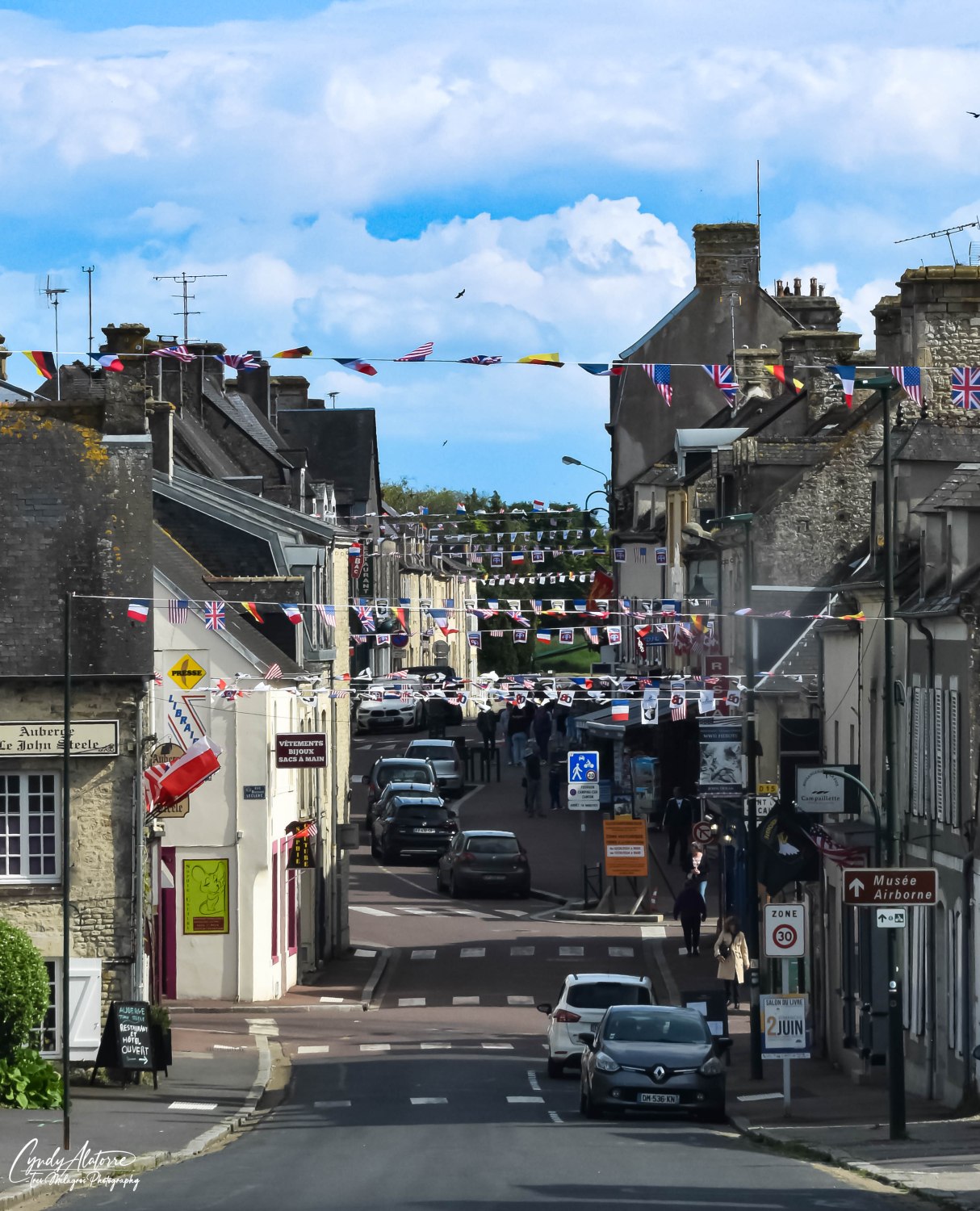
Our first stop was Saint Meré Eglise. With its flag banners welcoming us, we drove in and parked near the town square and church. Glancing around, the first thing I noticed was a mannequin with a parachute hanging from the church spire. I figured there had to be an interesting story behind this. Pvt. John Steele, of the 82ndAirborne Division, was one of the 13,000 paratroopers that was landing behind enemy lines in the Normandy area on that early June 6th morning in 1944. As he descended into Saint Meré Eglise, he was hit by shrapnel, couldn’t direct his parachute and a wind current trapped him on the spire of the town church. Unable to get free, he hung there for two hours, pretending to be dead until the Germans took him prisoner. He later escaped and rejoined his division, and the story of John Steele was born for the town of Saint Meré Eglise.
But this pretty little town was more significant than that. Saint Meré Eglise was centrally located on a route that goes directly to Utah and Omaha beaches, where the landings were to take place and the German forces would need to travel through it in order to counterattack the Allied Forces. Securing the town was crucial and so American paratroopers landed around the area, on rural farms and anywhere the wind took them. Many were being shot at as they landed, others got caught hanging from trees and utility poles. Two C-47 Dakota planes, transporting paratroopers, crashed near the town square and caught several buildings on fires. It must have been complete chaos. Yet with all this mayhem, the Americans were successful and Saint Meré Eglise was secured by the Allied Forces. This was one of the first major achievements on D-Day.

A short drive away, we next headed over to the small town of Angoville-au-Plain. Not as well known as its neighboring villages, this old small rural town had it’s own story to tell. Like neighboring areas, paratroopers quickly captured the town and two American medics, Kenneth J. Moore and Robert E. Wright, were tasked with setting up an improvised medical aid station.
Using the town’s old church, they immediately hung a white, red cross flag on the church and started to treat the wounded. What stands out about this story is that these two medics treated both American and German personnel and did not discriminate. They saw the injured as young men, not American or German, who needed help and the church was “sacred and safe” ground, both spiritually and literally. As fighting continued, German forces noticed the medics were treating both injured Americans and Germans indifferently. In response, the Germans did not attack the church and allowed these medics to tend to the injured. What is notable to me was the decency that was shown in a time of severe conflict.

Angoville-au-Plain held a special place for the medics and Robert Wright’s wishes to be buried there were honored. His grave is located on the same church grounds where he practiced care and compassion for his fellow man without regard to their origin.
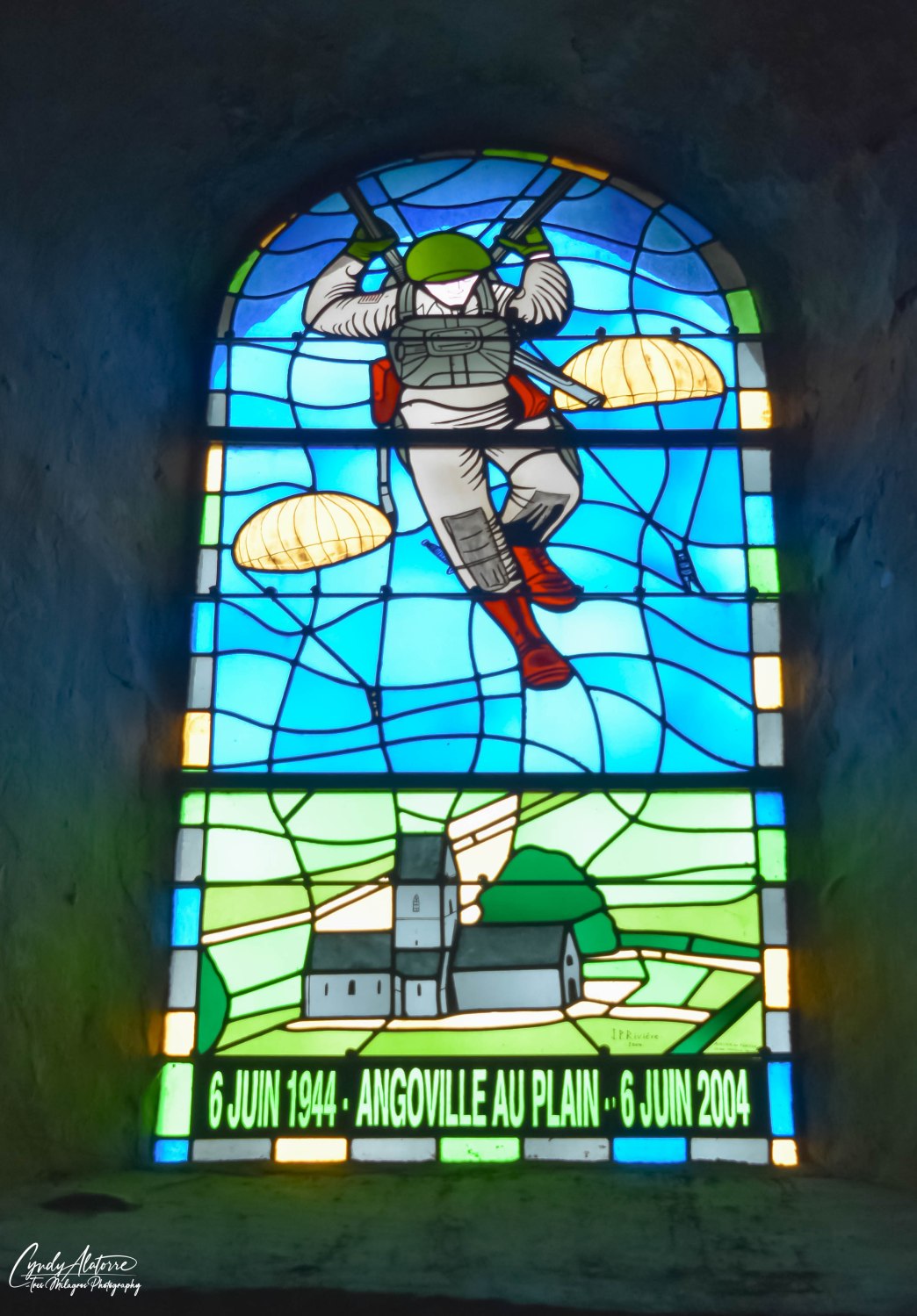
Seeing these towns and learning their stories was putting together the visual puzzle in my head about what D-Day must have been like. It wasn’t only an invasion on the beaches that happened. It was a multitude of towns, people and events all jumbled together. Now it was time to head to the coastline to get some more pieces for my that mental puzzle.
Picturesque and vast, the Normandy coastlines topography varies from high cliffs to flat shoreline. The targeted areas for the invasion was over a 50-mile stretch of coastline and the given names for the landing areas were Utah Beach, Omaha Beach, Gold Beach, Juno Beach and Sword Beach. With the American, British, Canadian and French forces making up the larger groups to lead the assault, each was assigned and responsible for their designated areas. So on June 6, 1944, at 6:30 a.m., the largest amphibious invasion in history began.
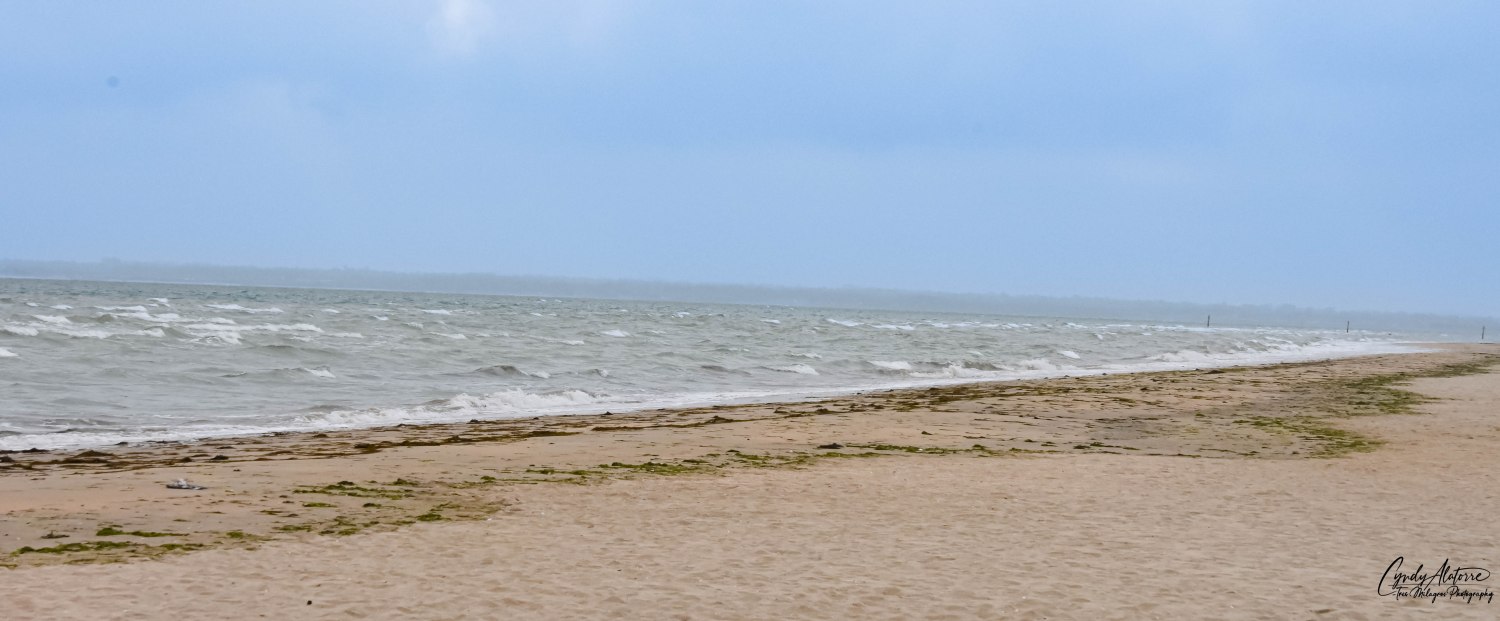
Located on Westernmost part of the frontline, Utah beach is scenic with its long and flat shoreline, soft sand and calm but steady waves. This was a drastic contrast to the high winds and cold rough seas the Allied Forces experienced. 23,250 American troops, of the U.S. 4th Infantry Division, initially landed 2000 yards south and off course. Concerned with this mishap it turned out to be in their favor as they ended up in an area that was less heavily fortified. Their landing and mission were successful, and they proceeded towards the port city of Cherbourg to support that fight.
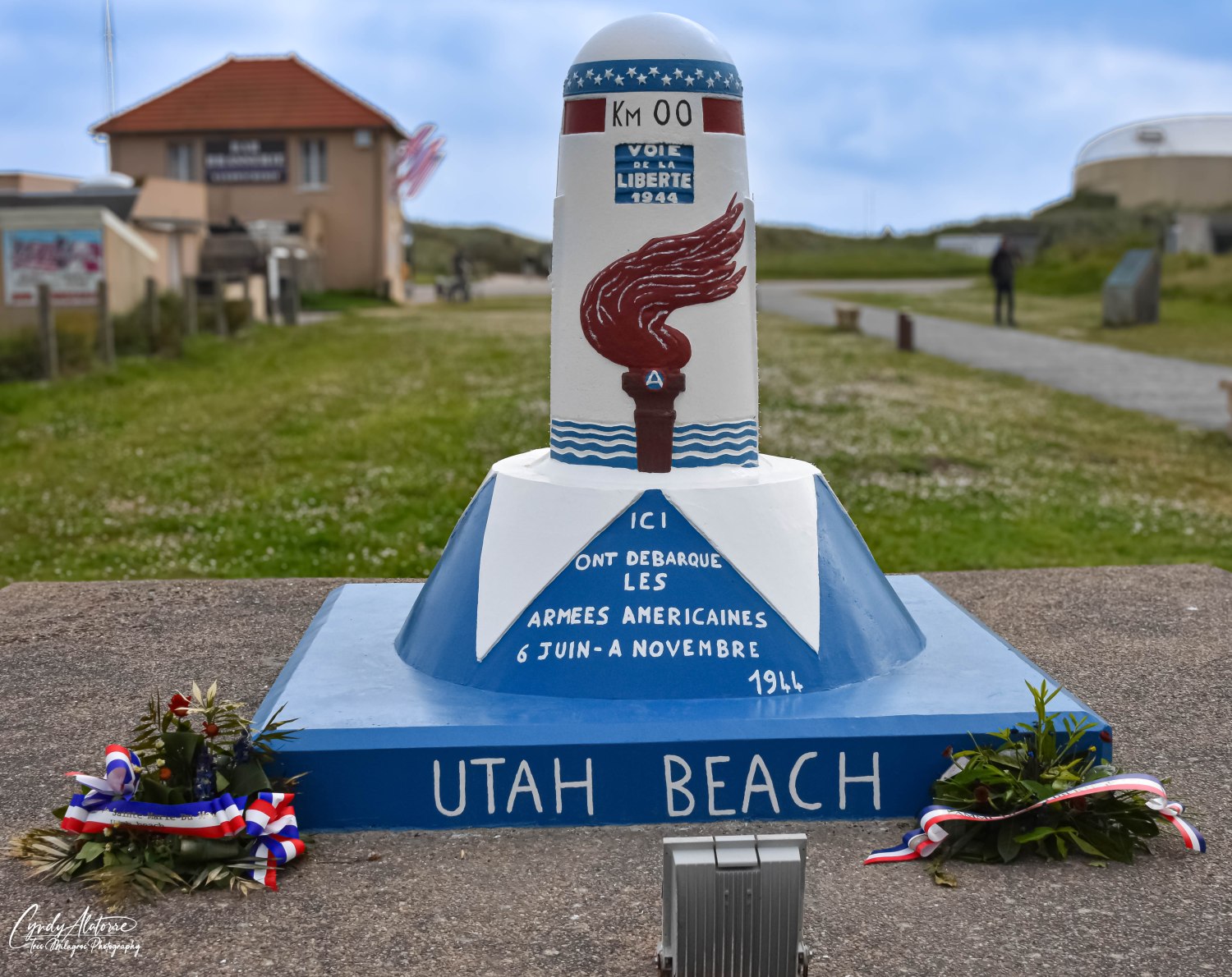
At the entrance to Utah Beach you see the Liberty Route marker, which they used as a starting point to measure distance. There’s also a German bunker you can go in and see. Below is a picture of it and if you look closely, take note of the fake windows painted on the bunker. They did this to trick the American planes, taking aerial photos, so they would think they were homes, not bunkers, and not be bombed.

I also noticed a house on the beach that I had seen in a picture while reading about D-Day. Eighty years later this house is still there. I took a picture of it to compare it to the older photo and you can see below too.
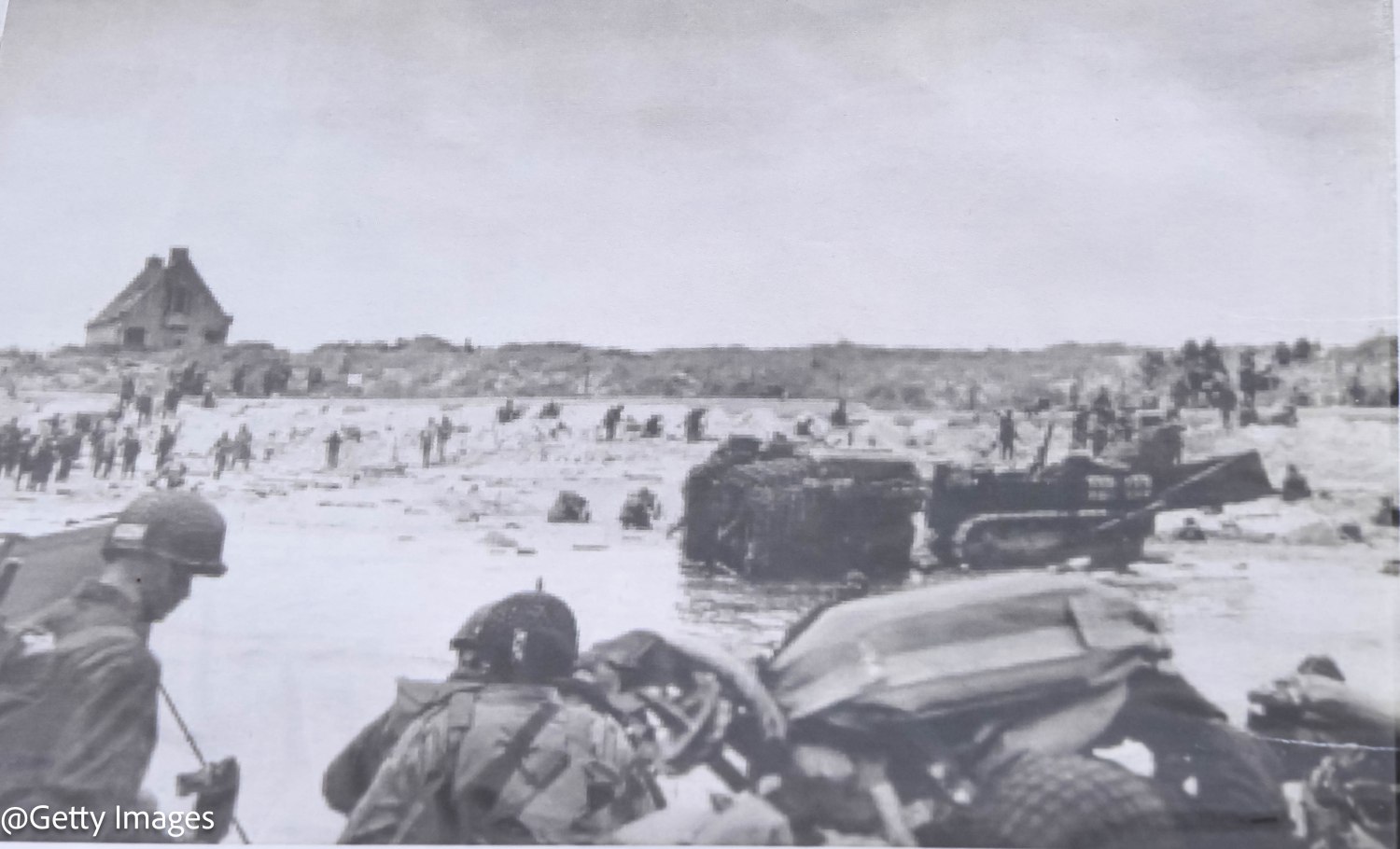
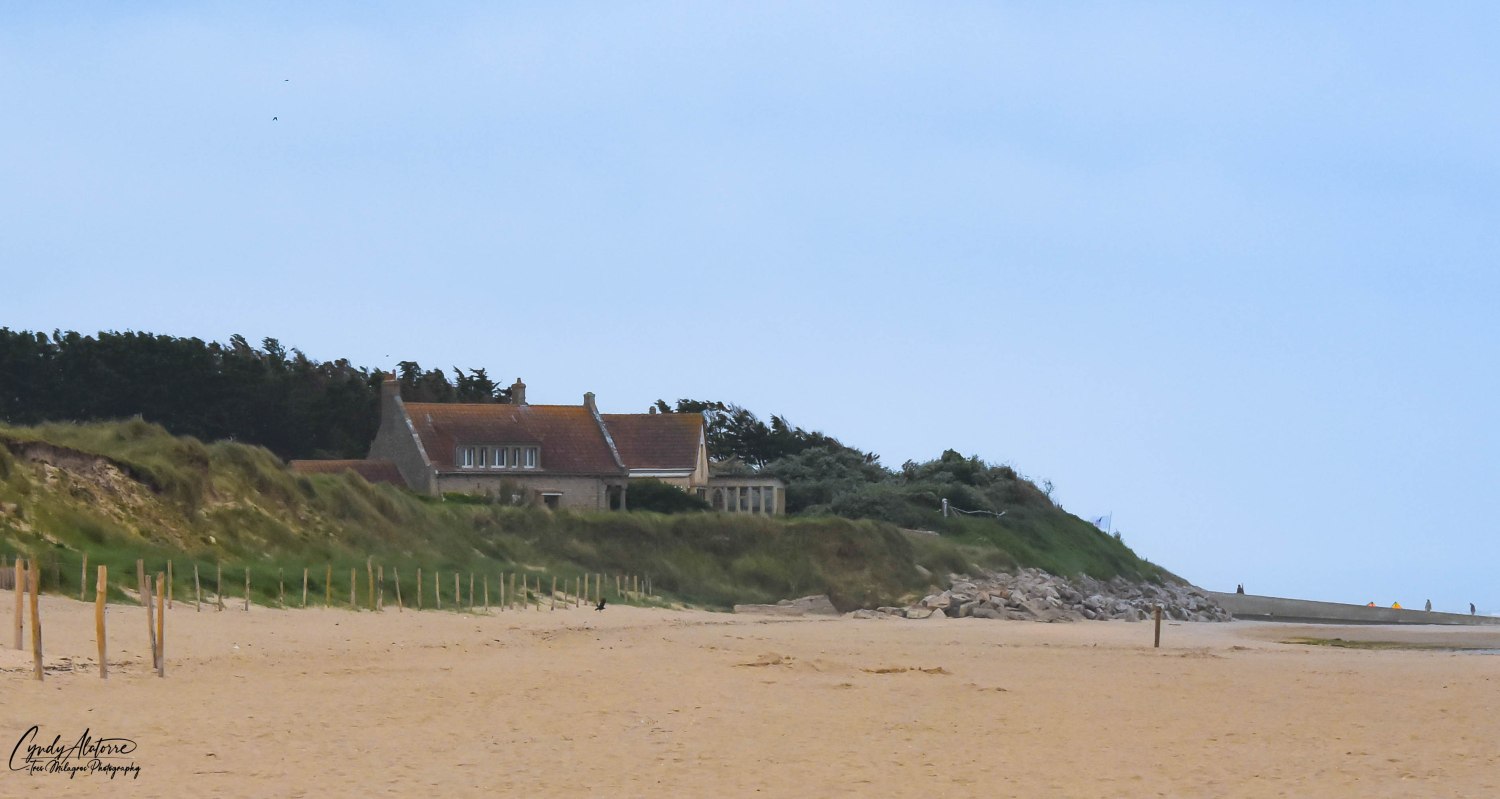
Before I left, I walked the beach and found myself wondering how many men had stood or walked where I was standing and what a contrast their view of the beach was to my mine now. I took a moment to look around and take all of it in. Grateful and honored is the best way to describe my impression to be able to visit this historic place. Our next stop was Pointe du Hoc.
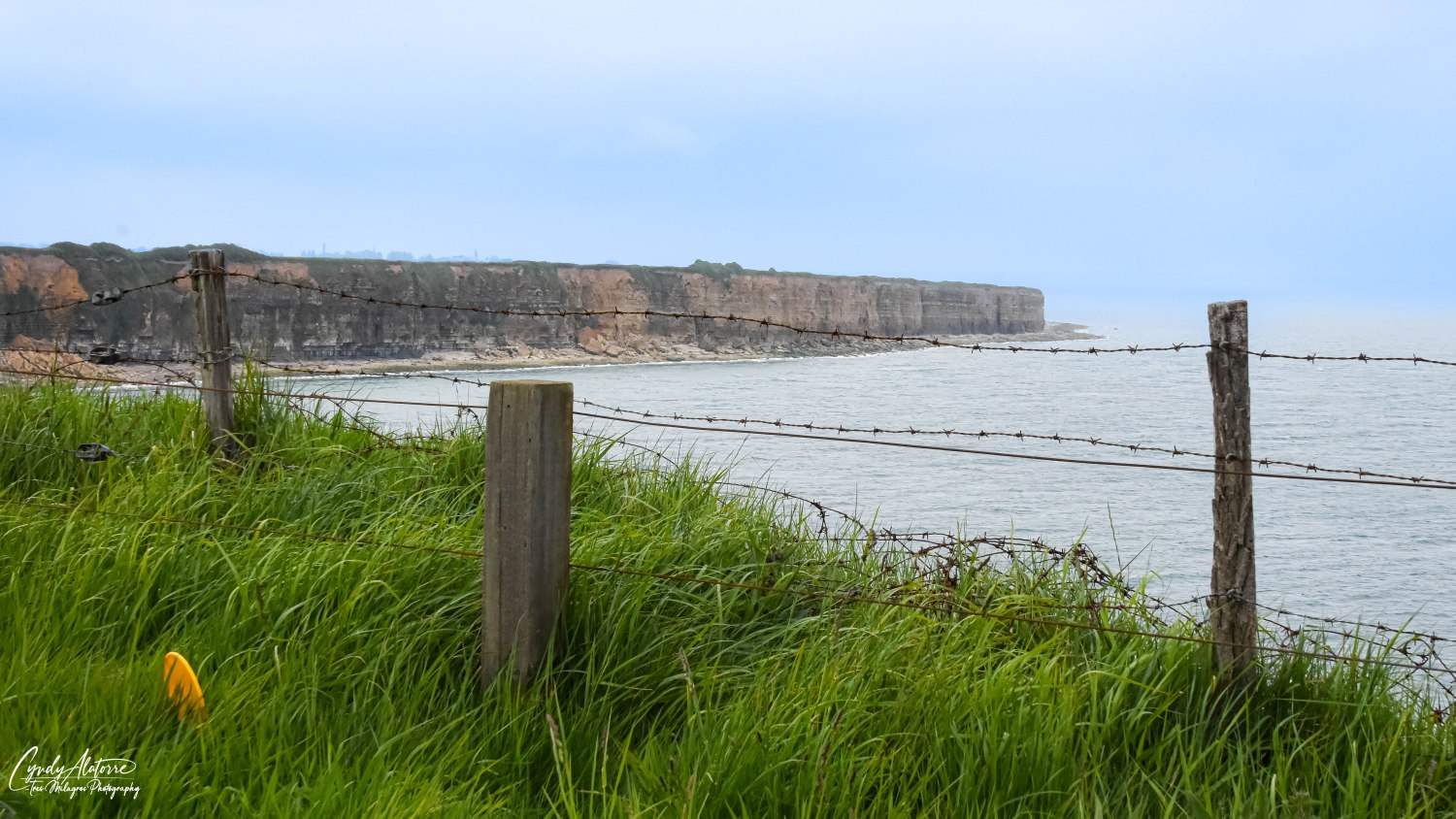
Driving 6.5 km (4.0 miles) east along the coastline, we arrived at Pointe du Hoc. With its 100 foot scenic cliffs and thin beach line, its terrain is vastly different from Utah Beach. A group of 225 U.S. Army Rangers were tasked with landing on this beach and scaling the high cliffs to the top, while under enemy fire. Once at the top of the cliff, they were to engage with the enemy and work their way to destroy the German batterie and get control of the coastal highway. Reading about this is one thing, but looking at it in person you think “how in the world did they accomplish this?”
Using ropes, ladders, and their knives along with their sheer grit, these Rangers made it up that cliff to fight their enemy. At one point during the conflict, they were informed that support would not arrive for a few days and they would have to stronghold the area by themselves. After two days of fighting, 77 were killed and only 90 of the original 225 were still able to fight. As I listen to our guide explain what transpired, I was in awe at their ability to accomplish this feat in the midst of so much turmoil. Below are photos of Pointe du Hoc and note the cliffs they had to overcome to fulfill their mission on D-Day.
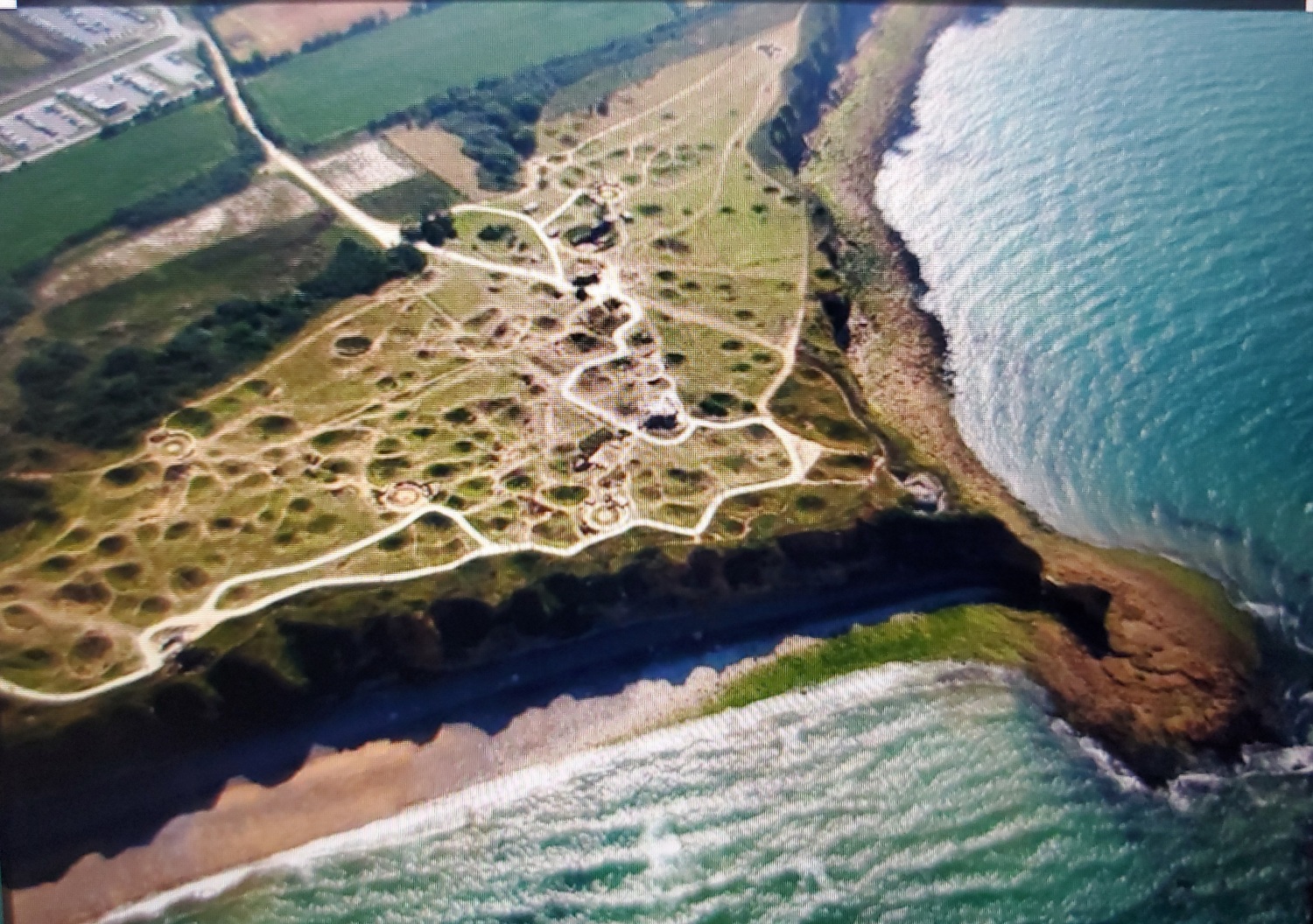
Bombarded by the Allied Forces, many craters are still visible at Pointe du Hoc and the uneven landscape gives you an idea of how intense the fighting was. Seeing the German bunkers and scarred landscape impressed just how powerful the artillery was for both sides. It was time to visit our last site, Omaha Beach, to bring it all together.
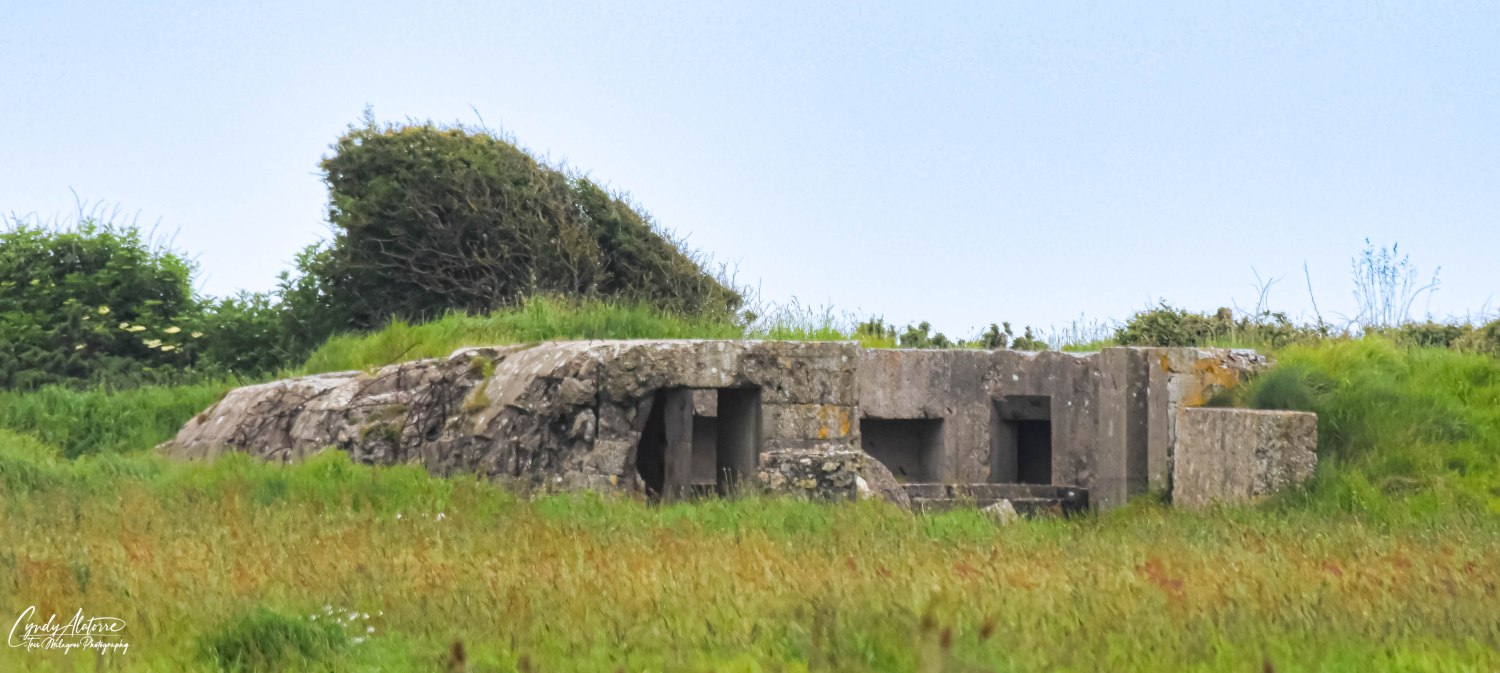

A few minutes east, we arrived at Omaha Beach. Looking at the long beaches, there was no indication of what had occurred 80 years ago. It’s as if nature stepped in and healed the land. With its long shore, 100 foot cliffs and armed German forces already on the shore, a daunting task awaited the men arriving on Omaha Beach. Photographs and film are the only visual documentation that shows the actual scenes of D-Day and even then, it seems surreal. On June 6th at 6:30 a.m., the U.S. 1st and 29th infantry divisions started their assault. 34,250 troops landed on Omaha beach by nightfall, however, they experienced the worst of the whole D- Day operations. Suffering more than 4,400 casualties, the Allied Forces efforts and sacrifice were at a great expense but not in vain as it changed the tide in the war.

Visiting Omaha Beach and all the other locations in Normandy has been a very personal experience for me. Appreciation and thankfulness is what I felt for those men who had stormed the beaches and other sites that day in June 1944. I quietly offered my gratitude for those who perished and those that survived. How could you not be thankful? Now having been to Normandy and learn about this historic event, I felt I had just been educated on one of the most important history lessons.
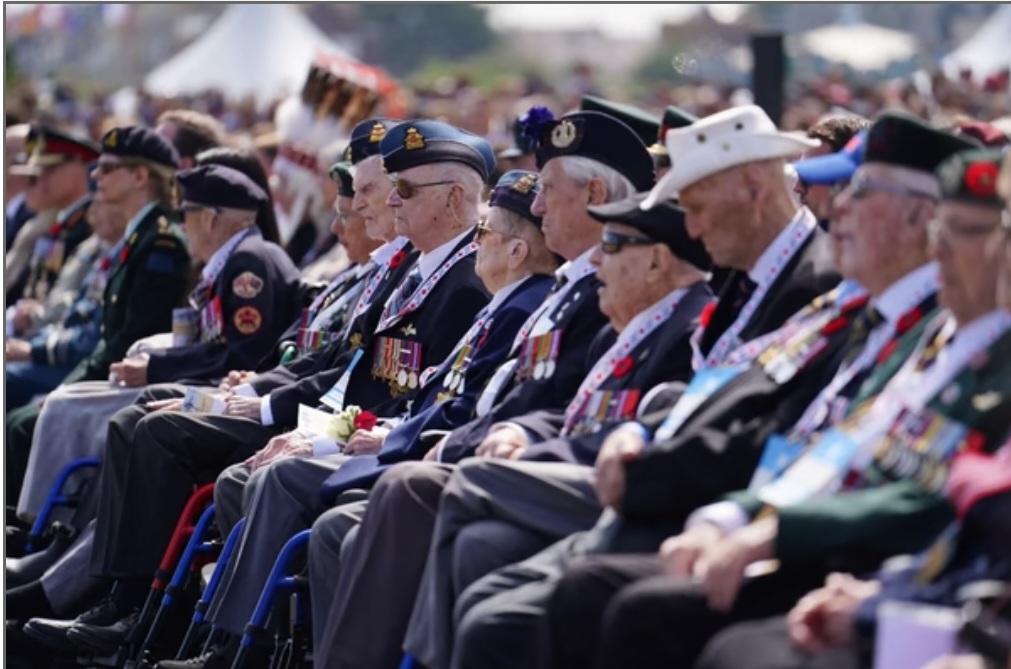
If you want to get a visual depiction of the events involving D-Day and Normandy, the movies “Saving Private Ryan” and “Band of Brothers” are good reference points. The book “D-Day” by Stephen E. Ambrose, is another good resource too. Out of extraordinary circumstances, remarkable men arise. This couldn’t be more true with the events of World War II. These men deservingly earned the title as “The Greatest Generation”.
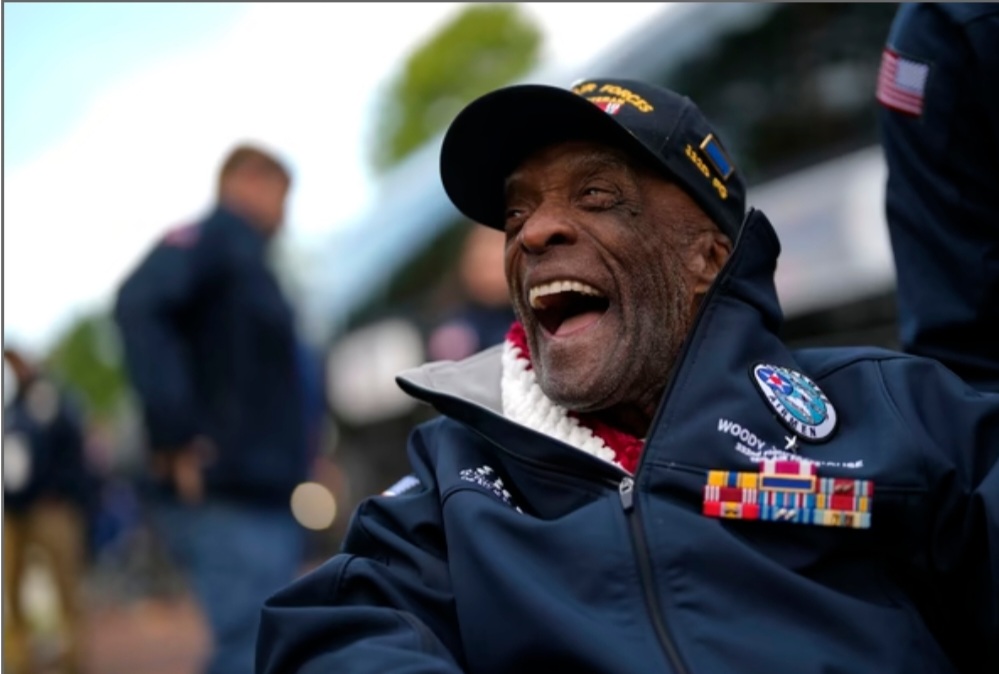
I’ve met a few of these veterans and my lasting impression is that they are “a different breed” and we have so much to learn from them. Recently a news reporter asked a WWII veteran if he had any last thoughts about D-Day and he replied “It was a job we had to do and we did it for freedoms sake”. Now it’s our task to keep sharing the story of D-Day with current and future generations so that they will know of the heroics of the men and women of “The Greatest Generation” and how they changed history.
Until next time, we’ll keep moving on and see were we go via El Camino Thru My Lens.
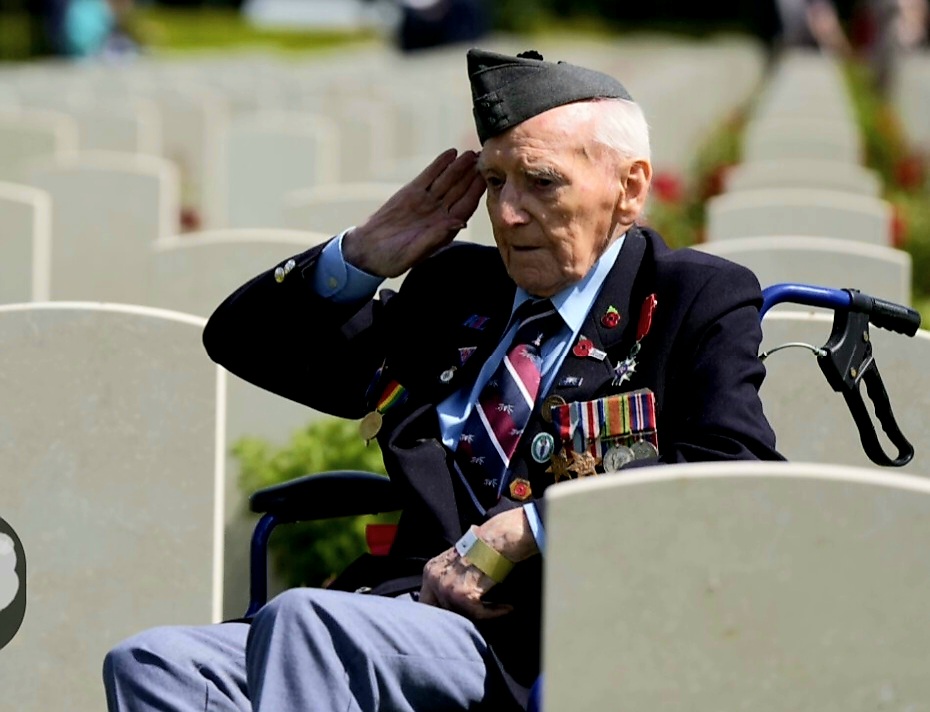
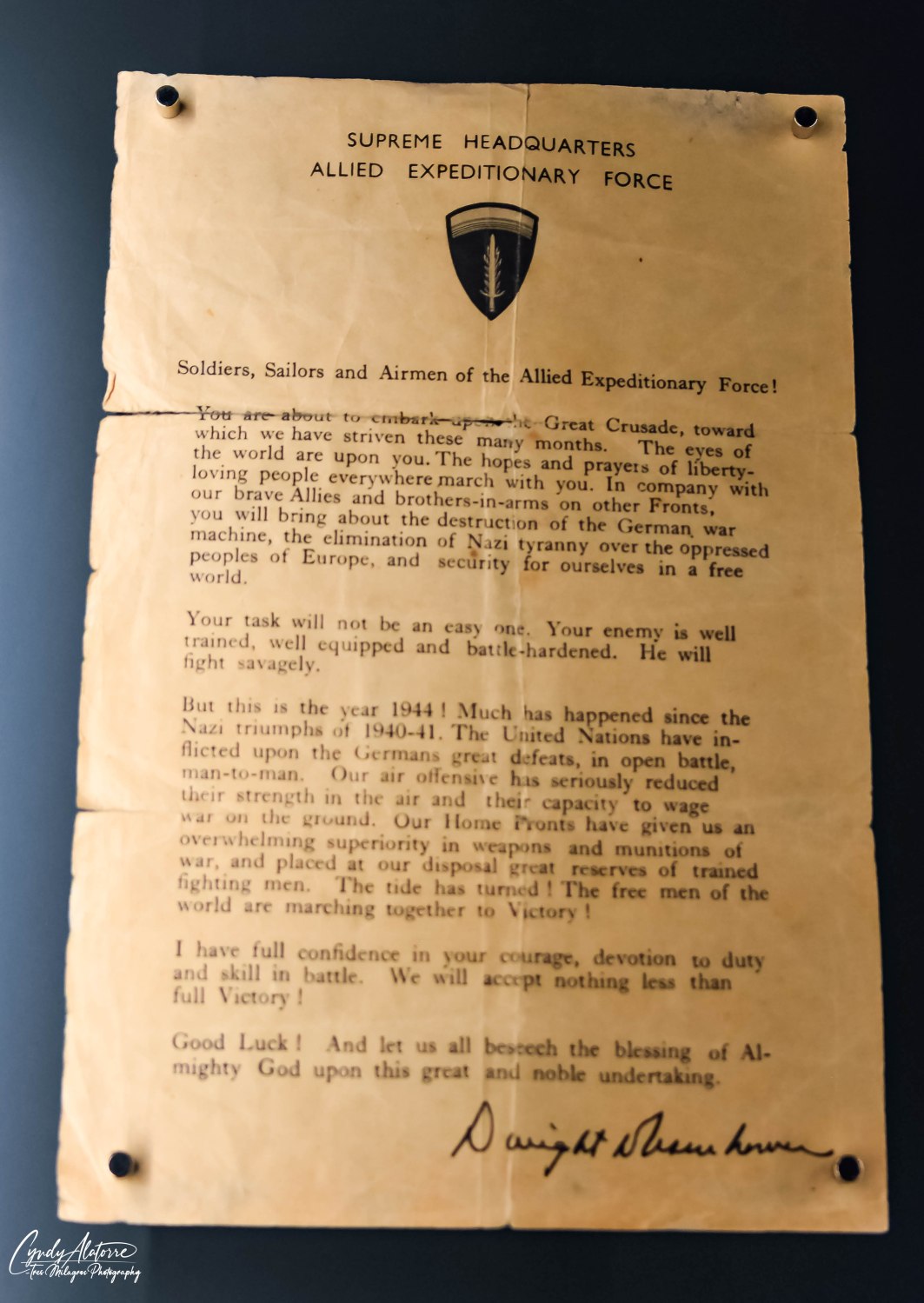
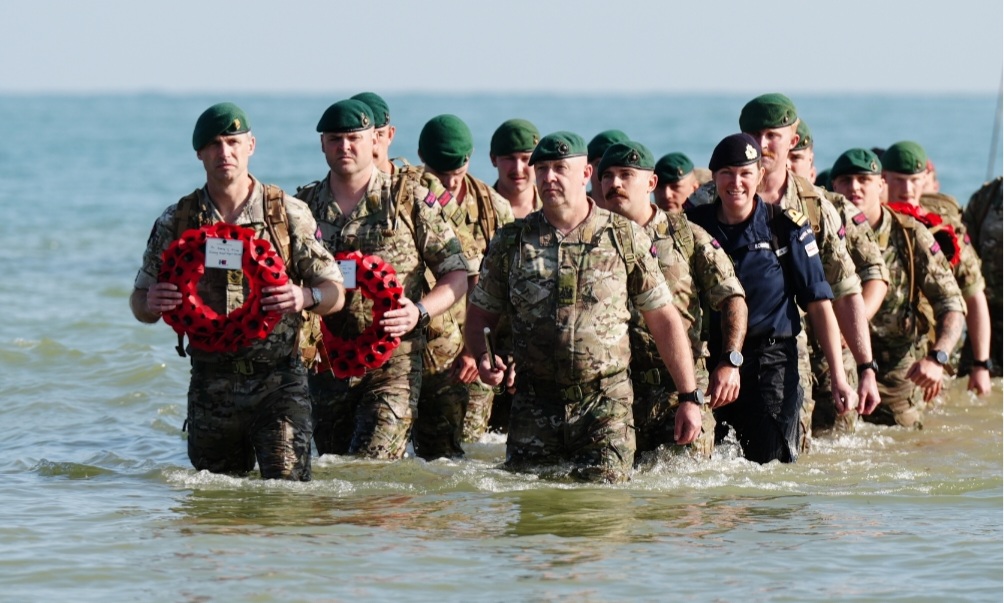
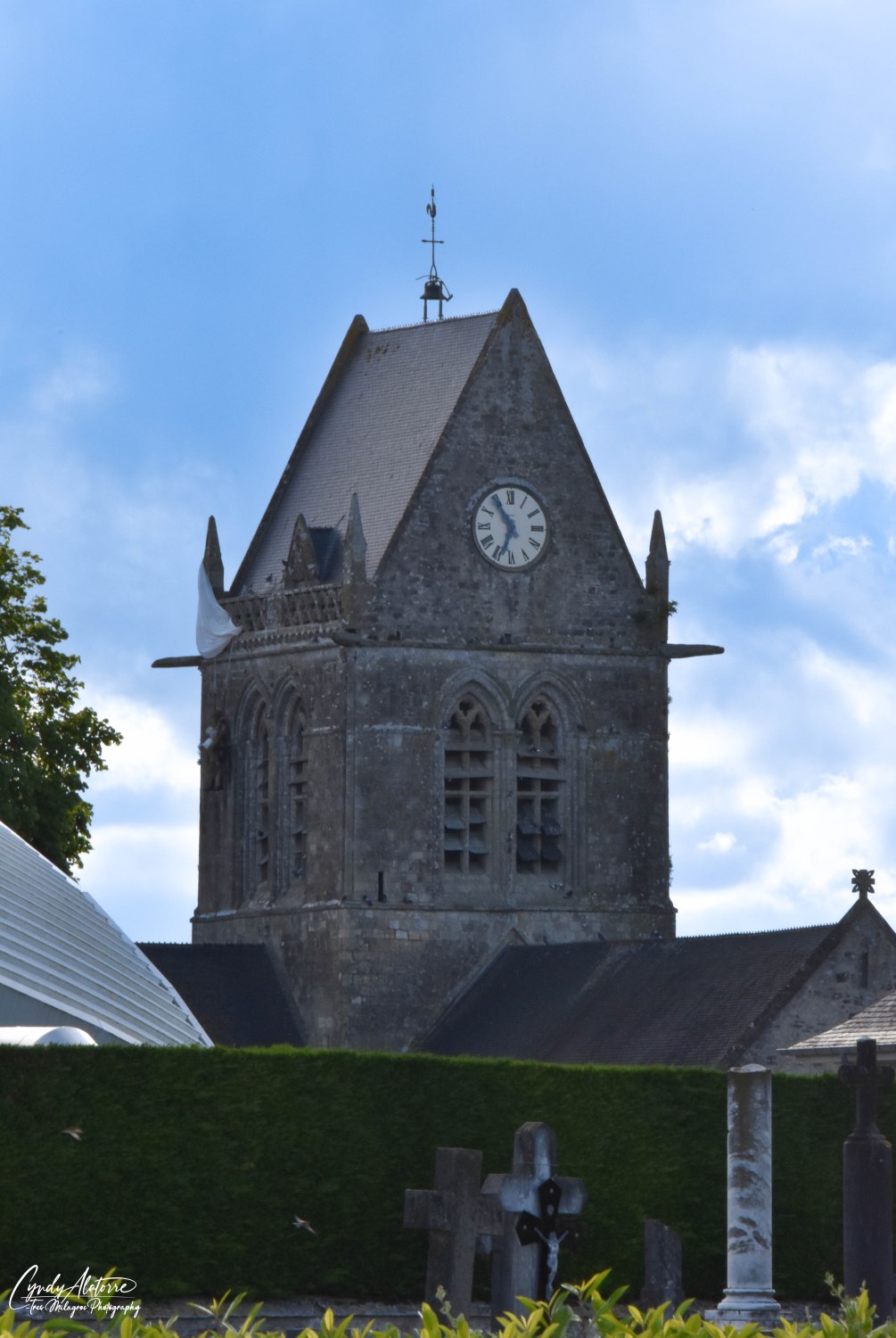
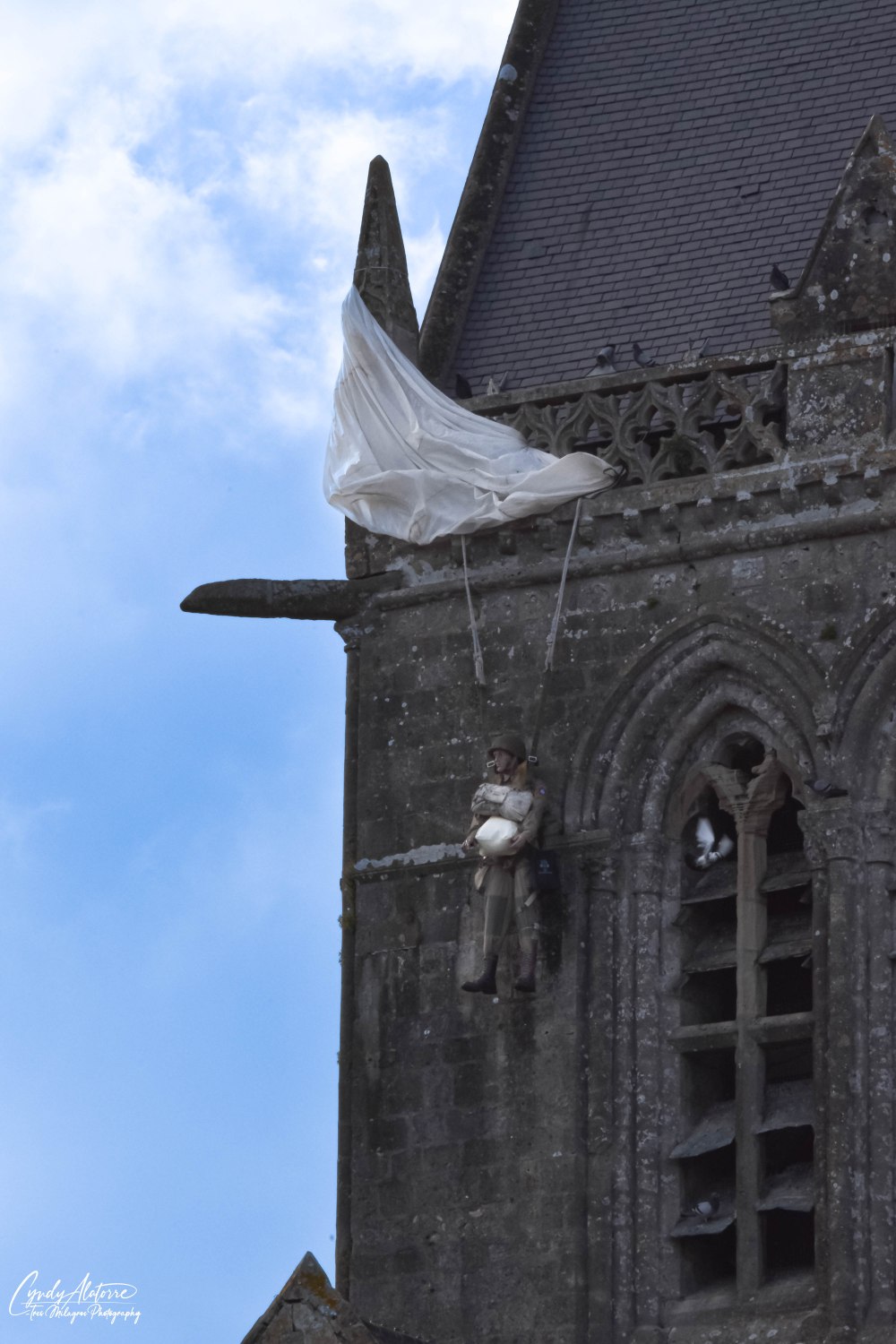
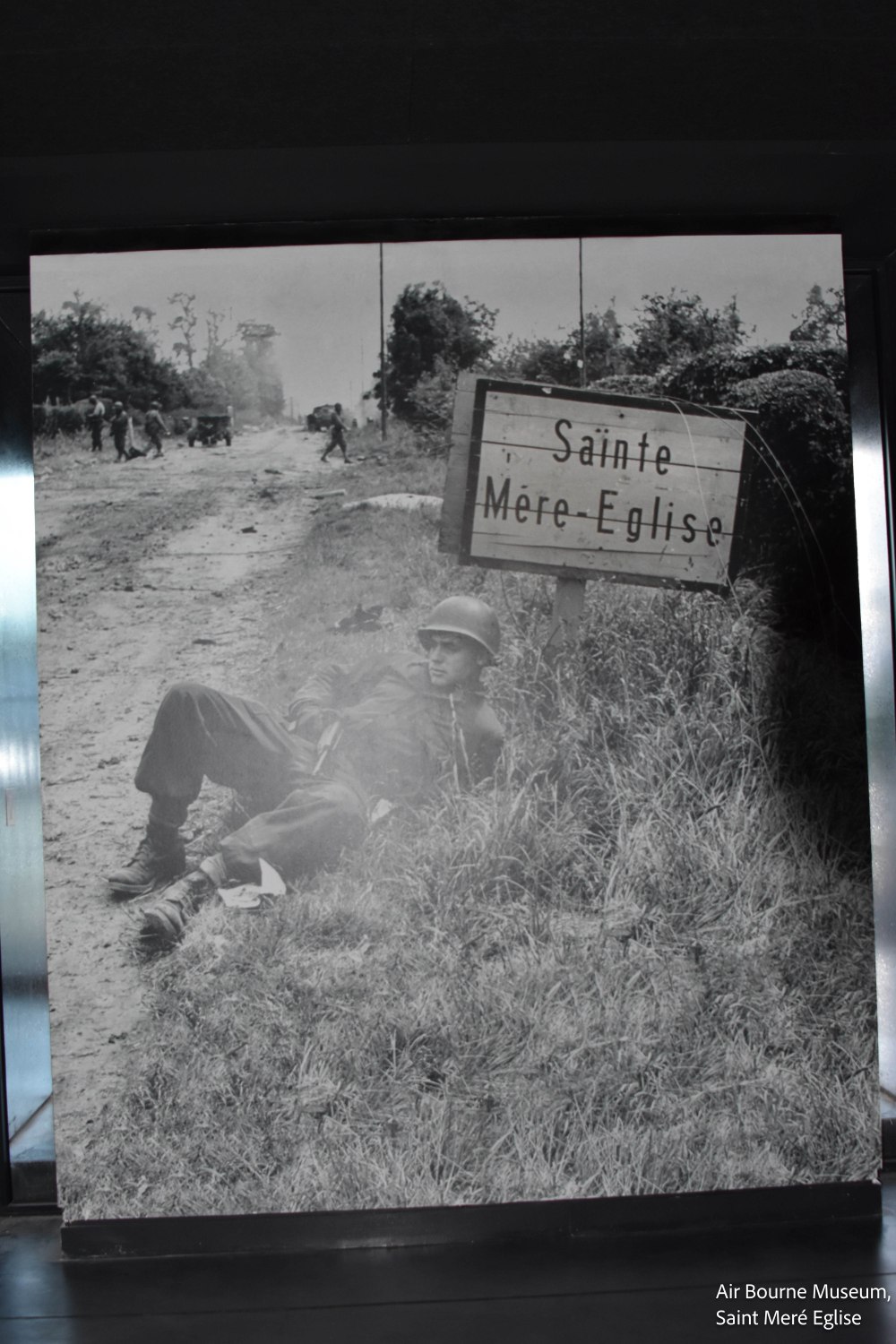
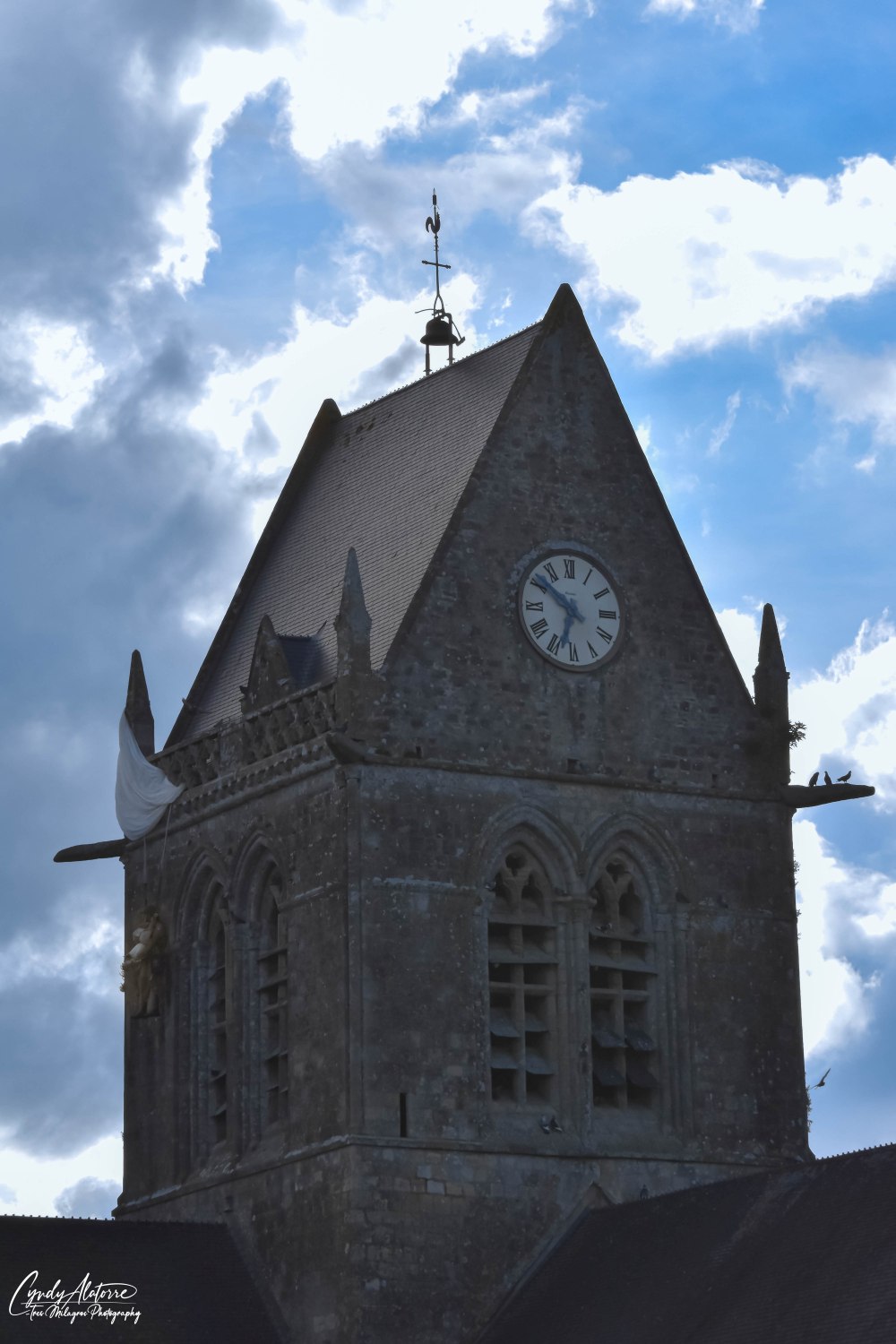
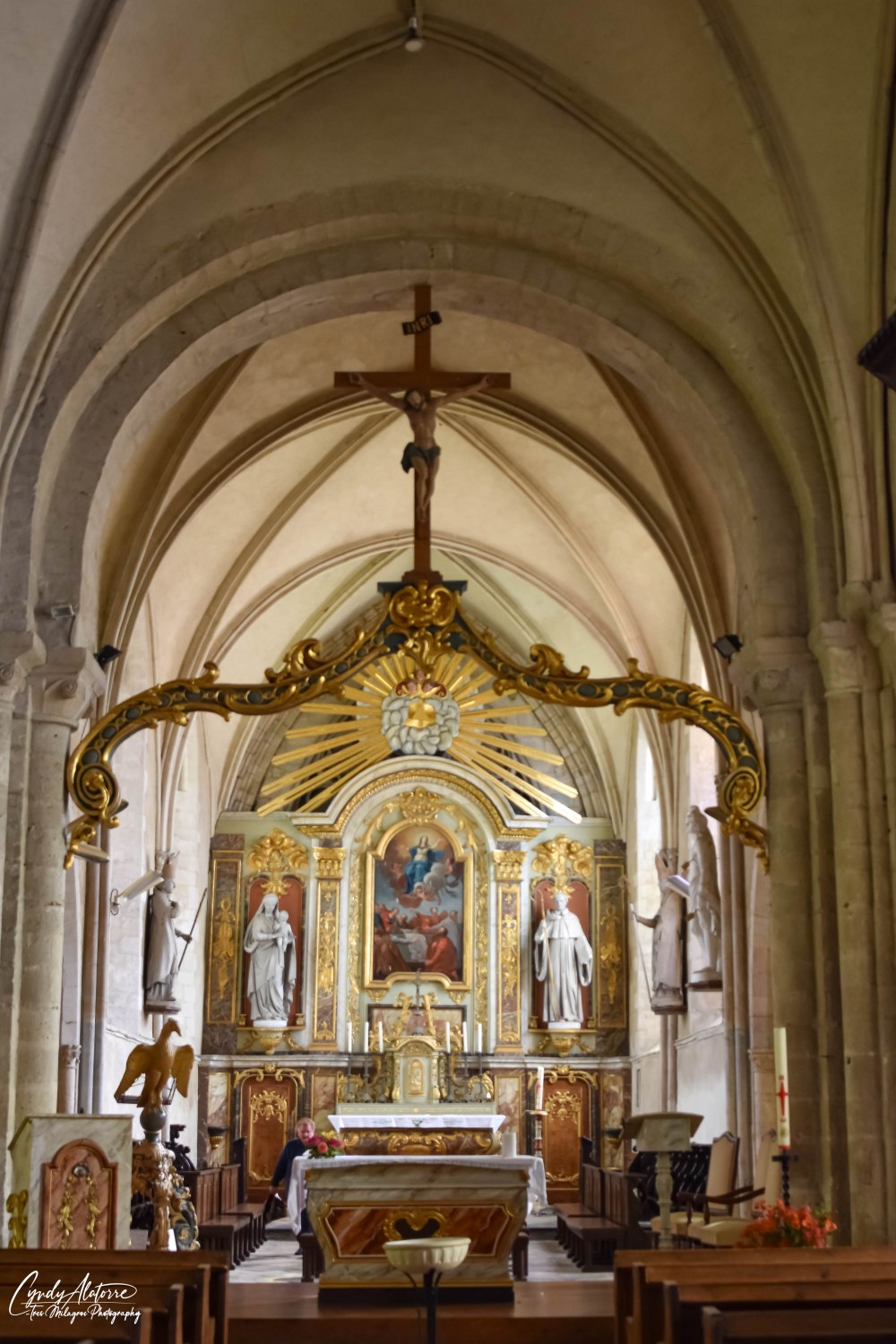
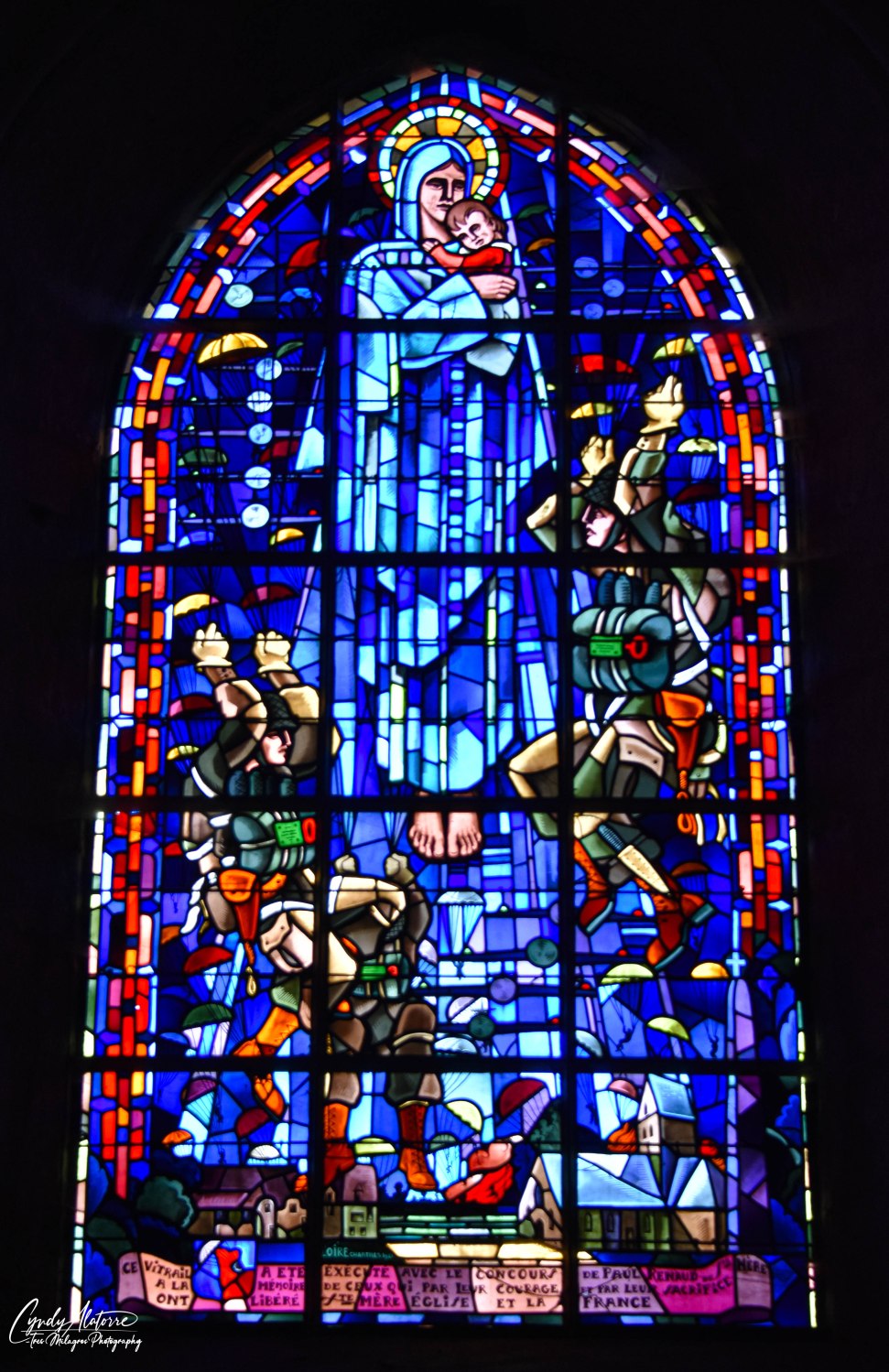
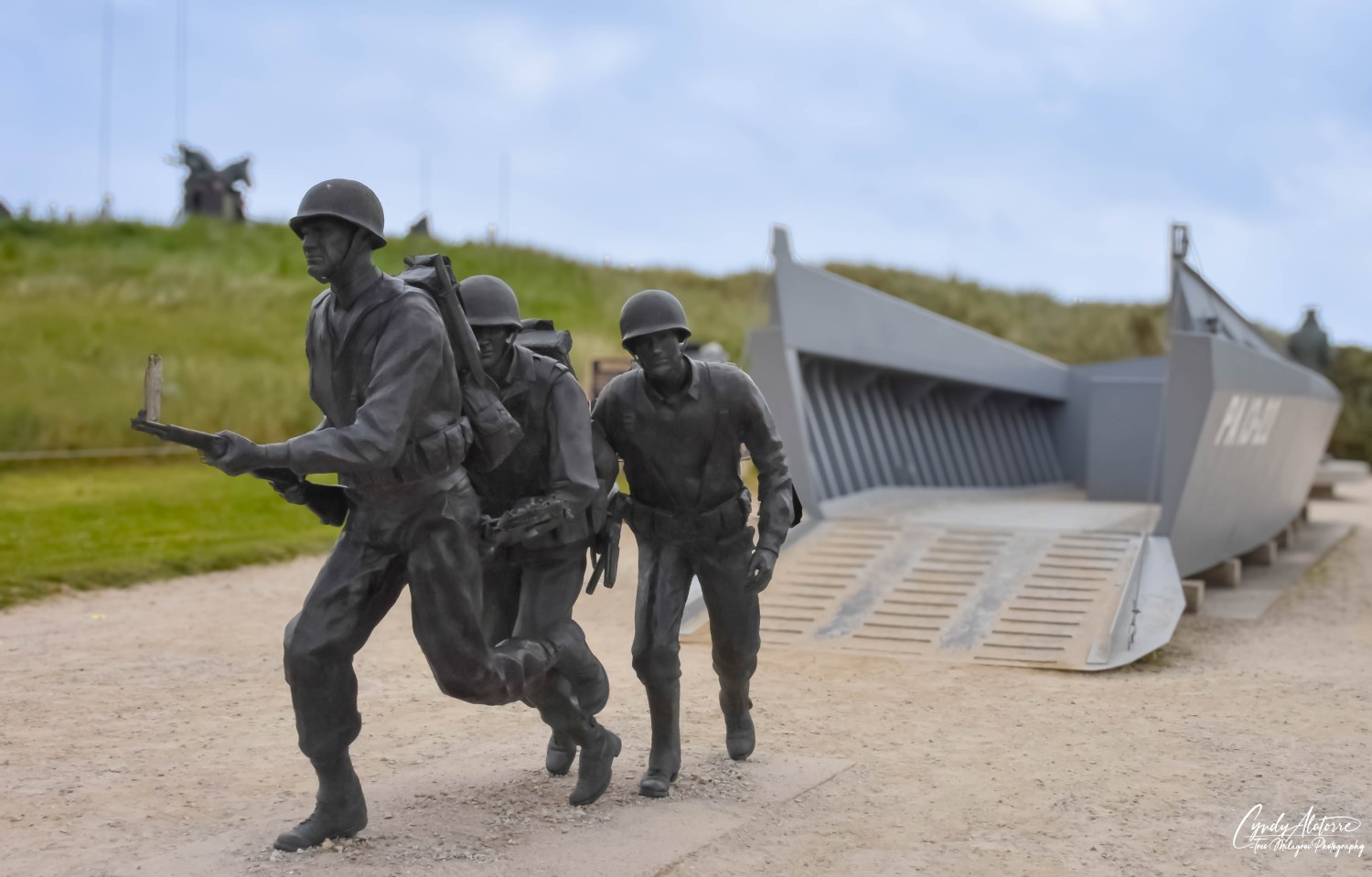
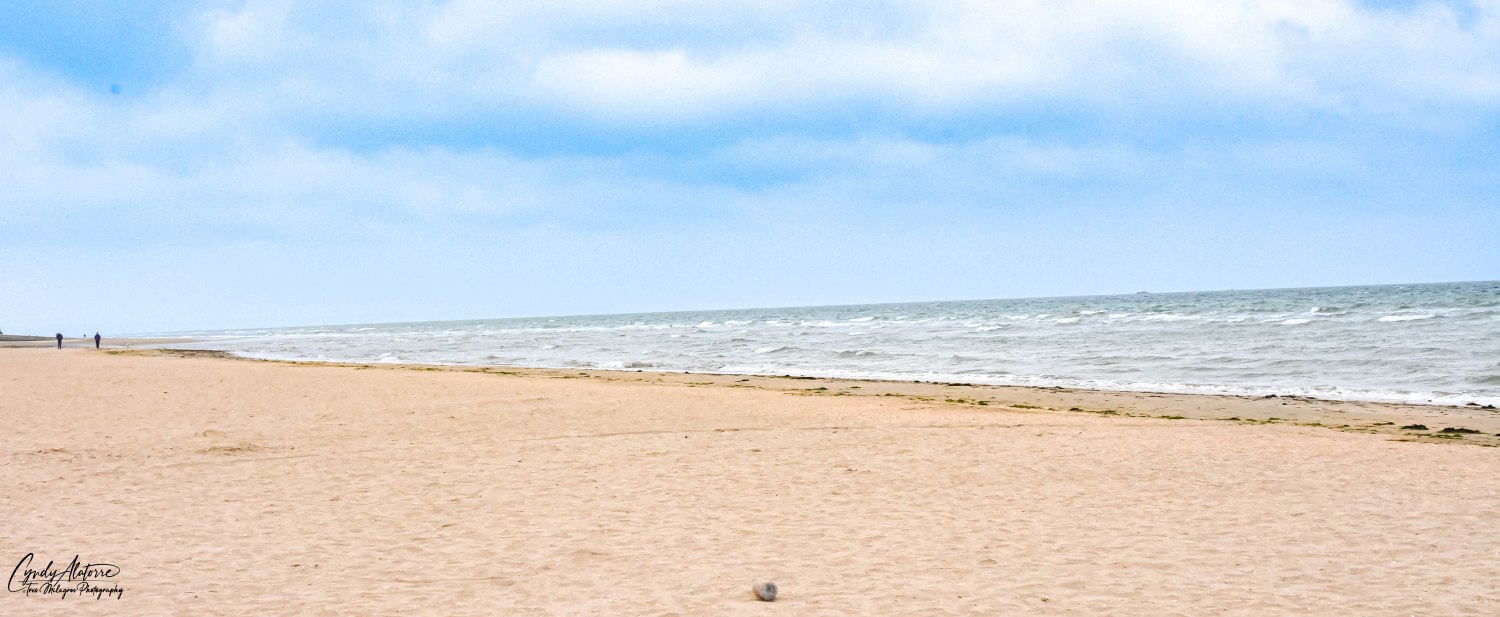

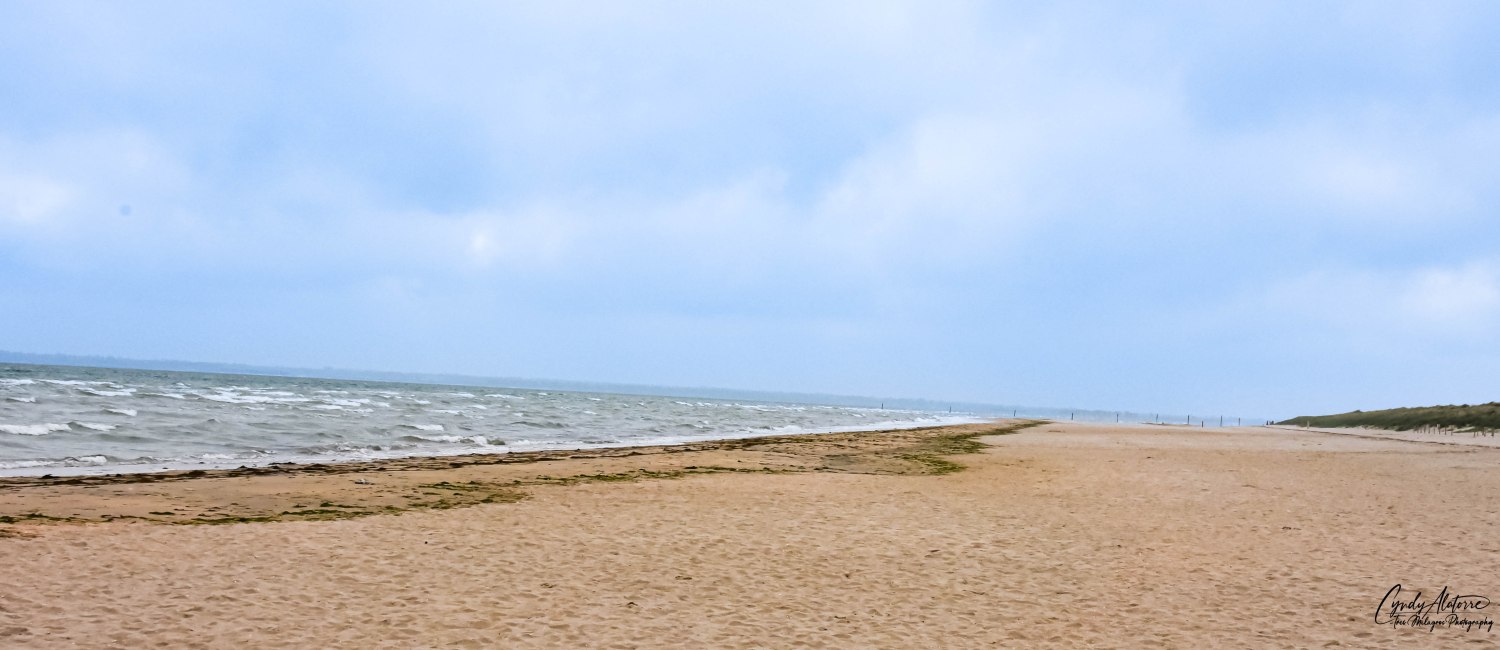

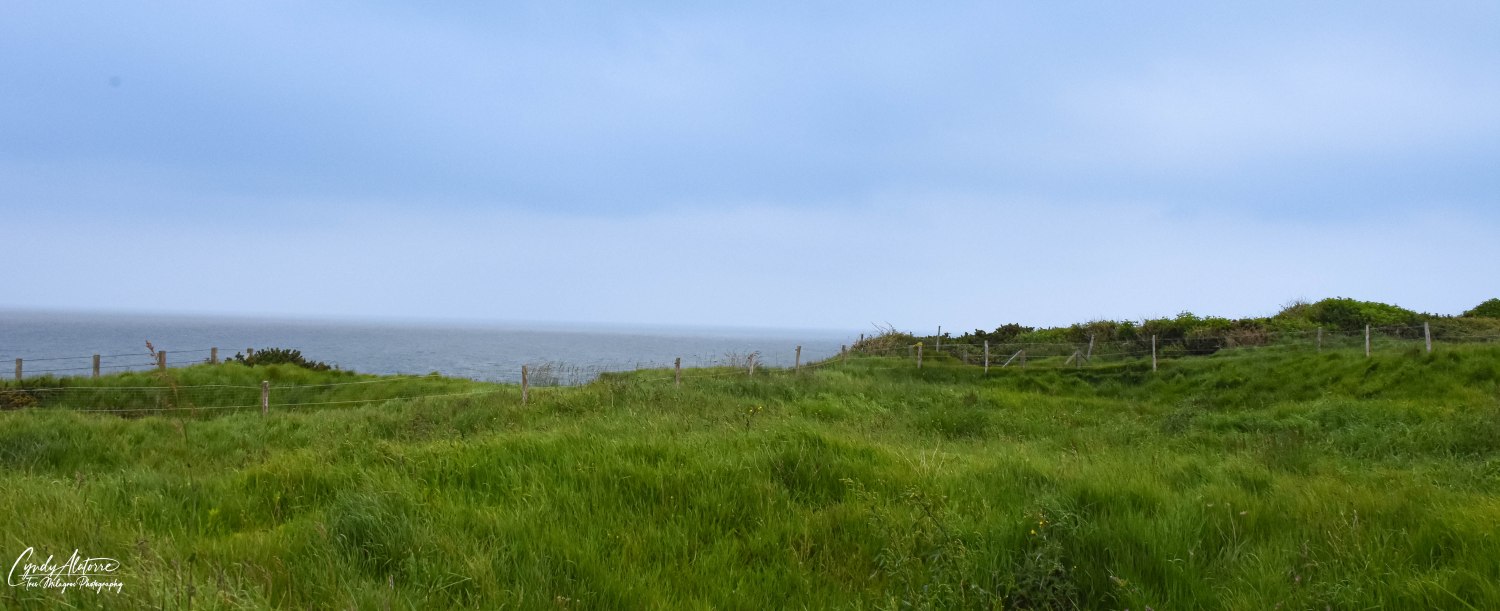
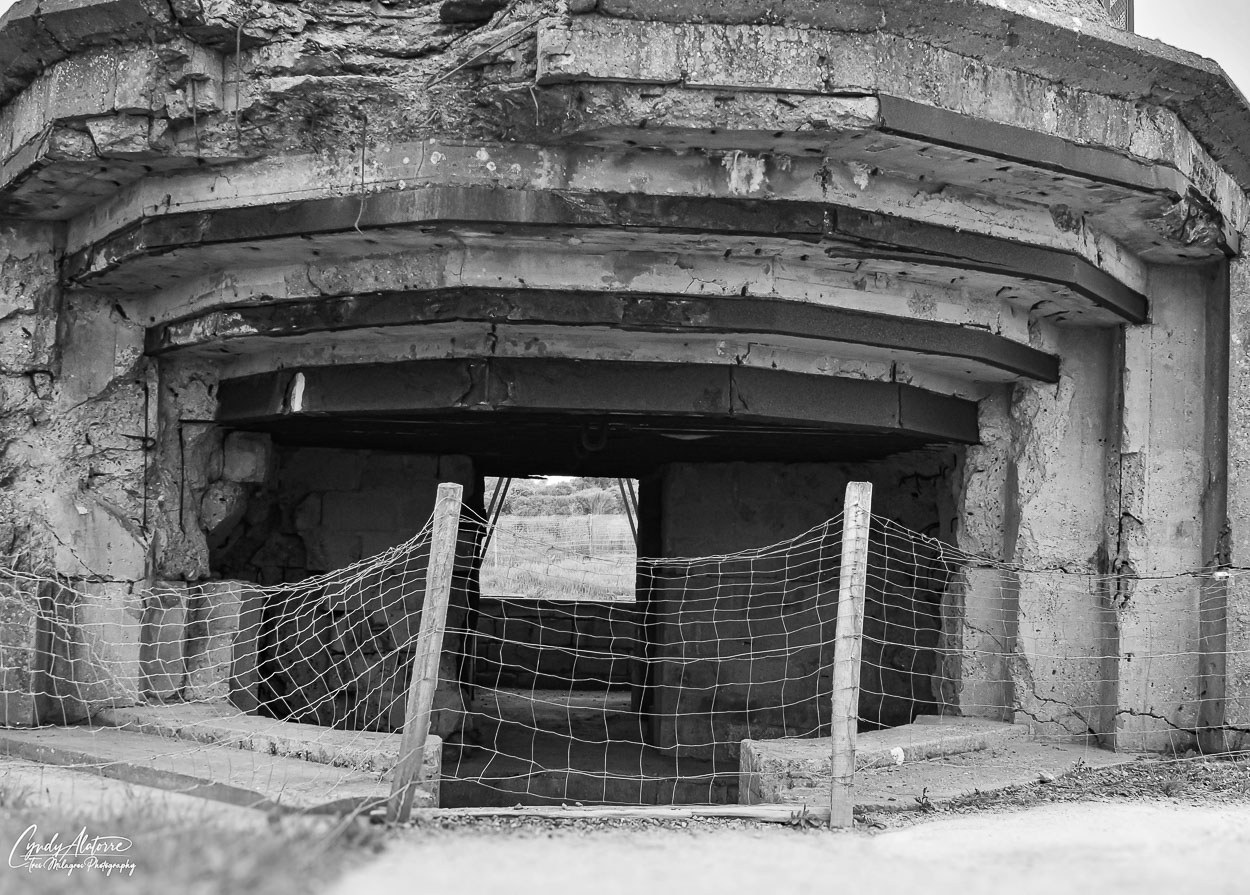
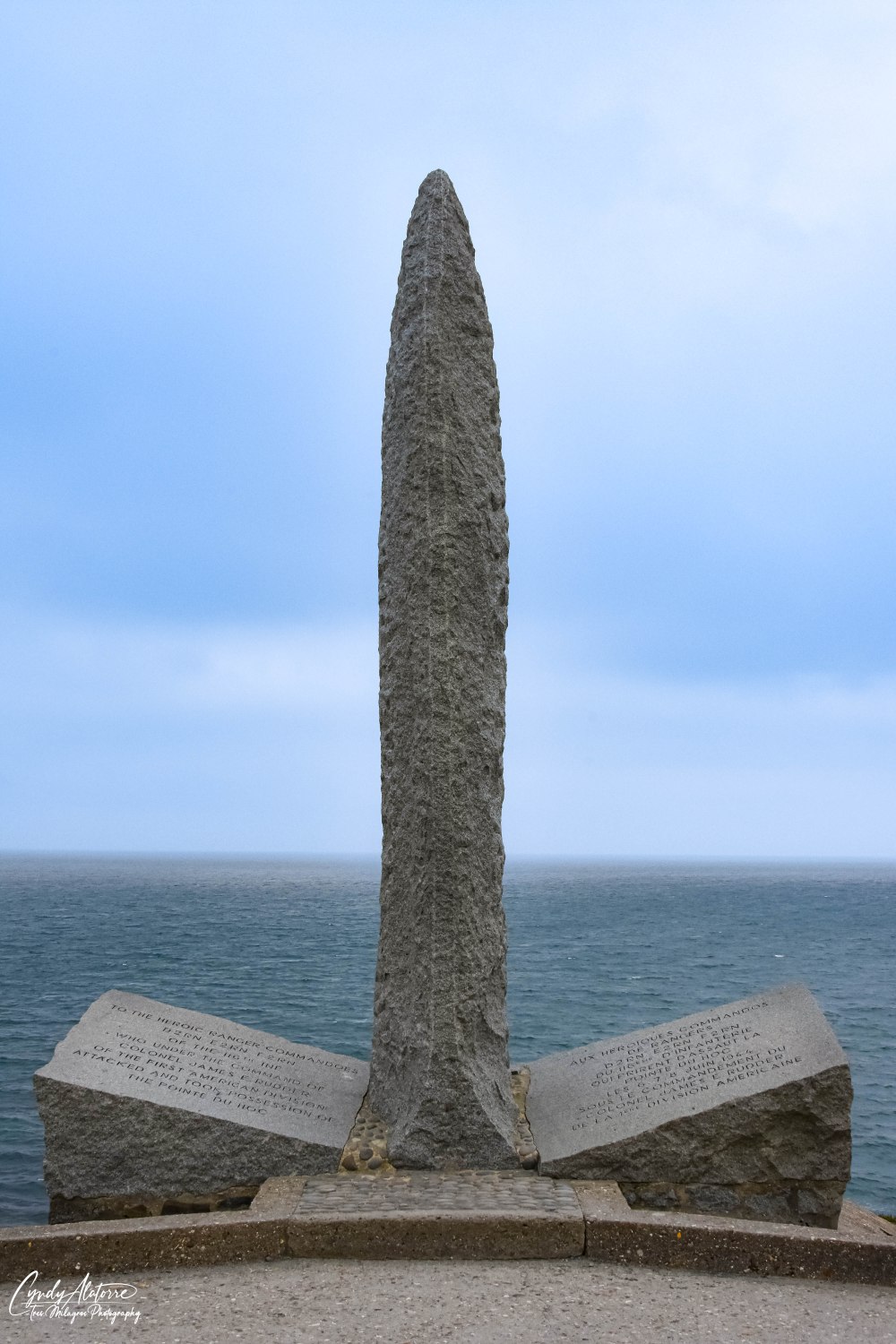
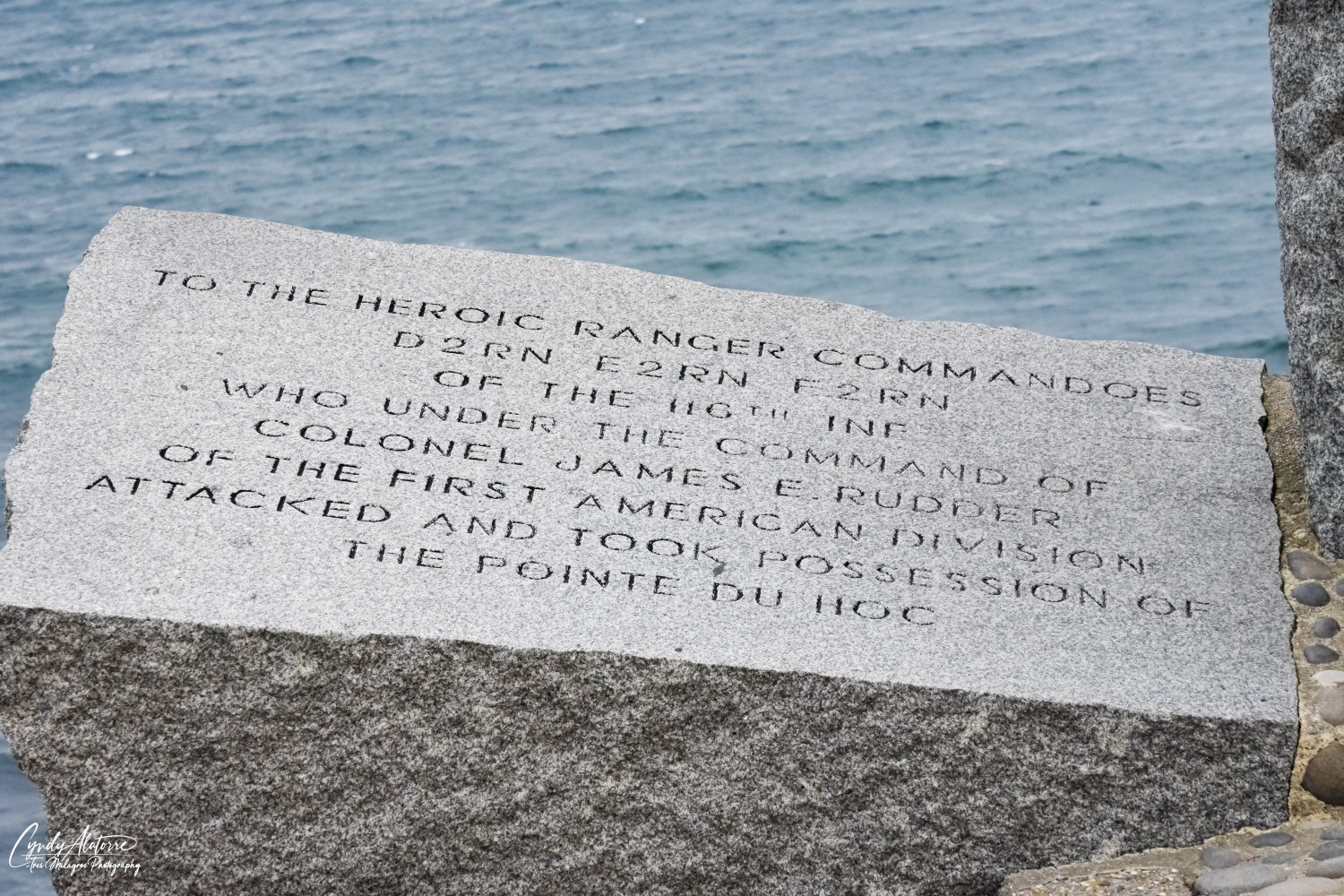
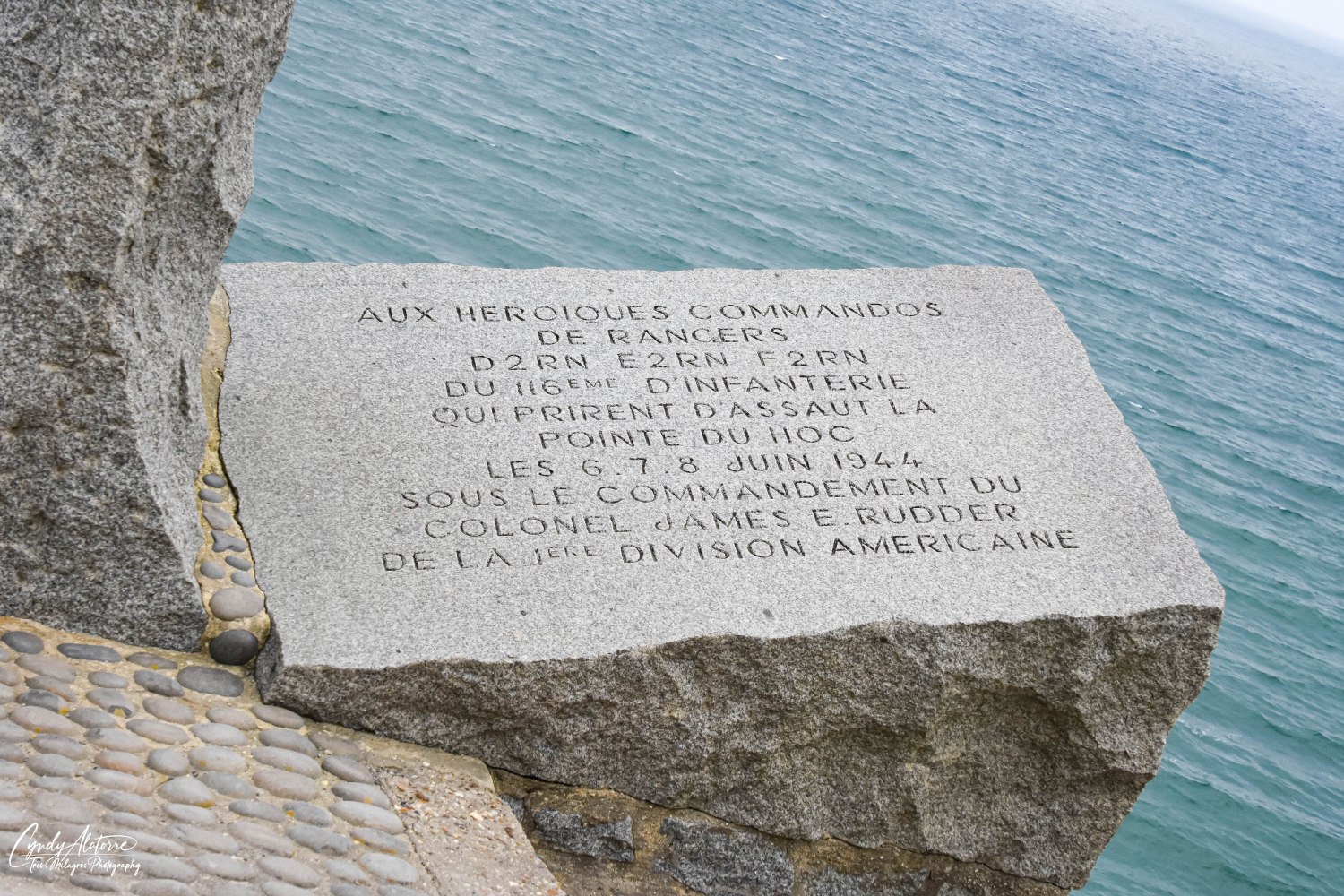
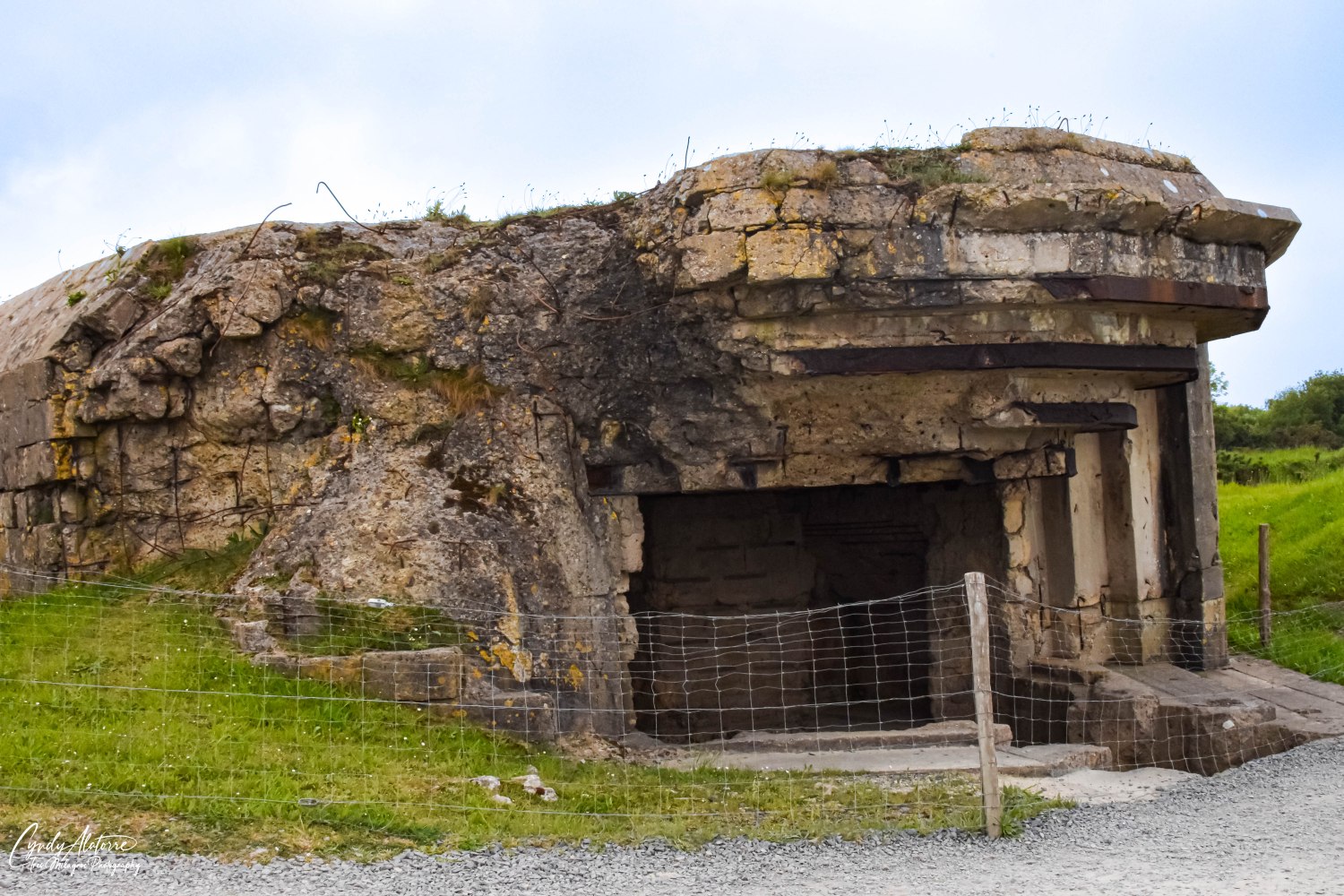

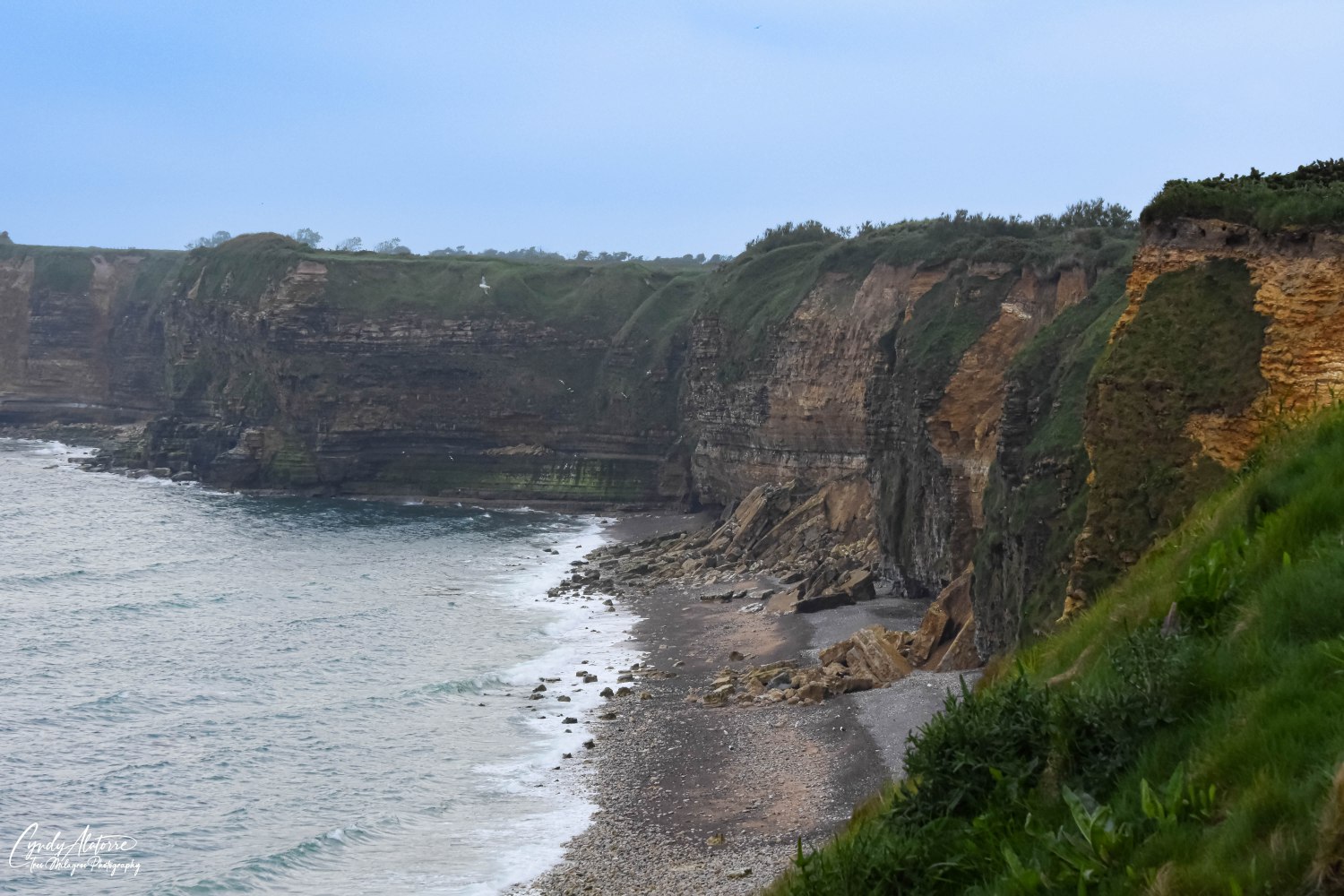



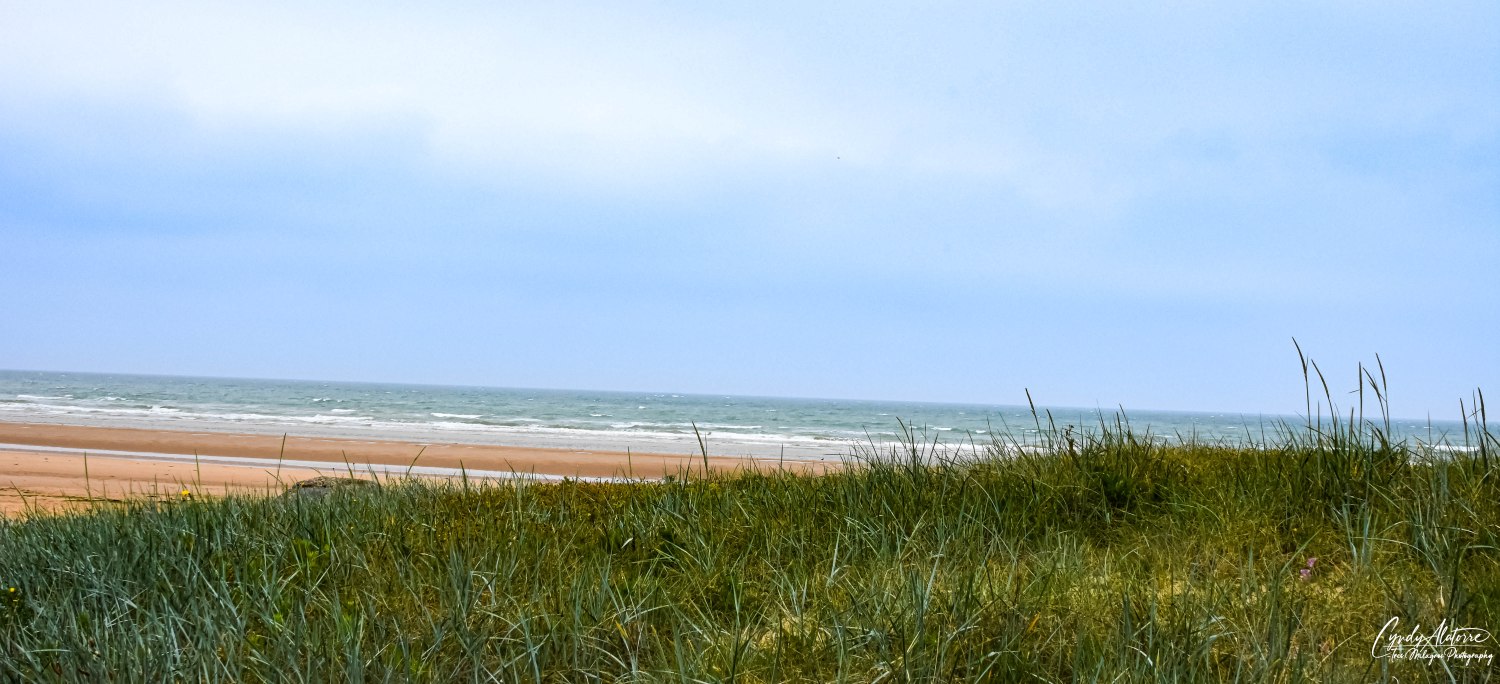

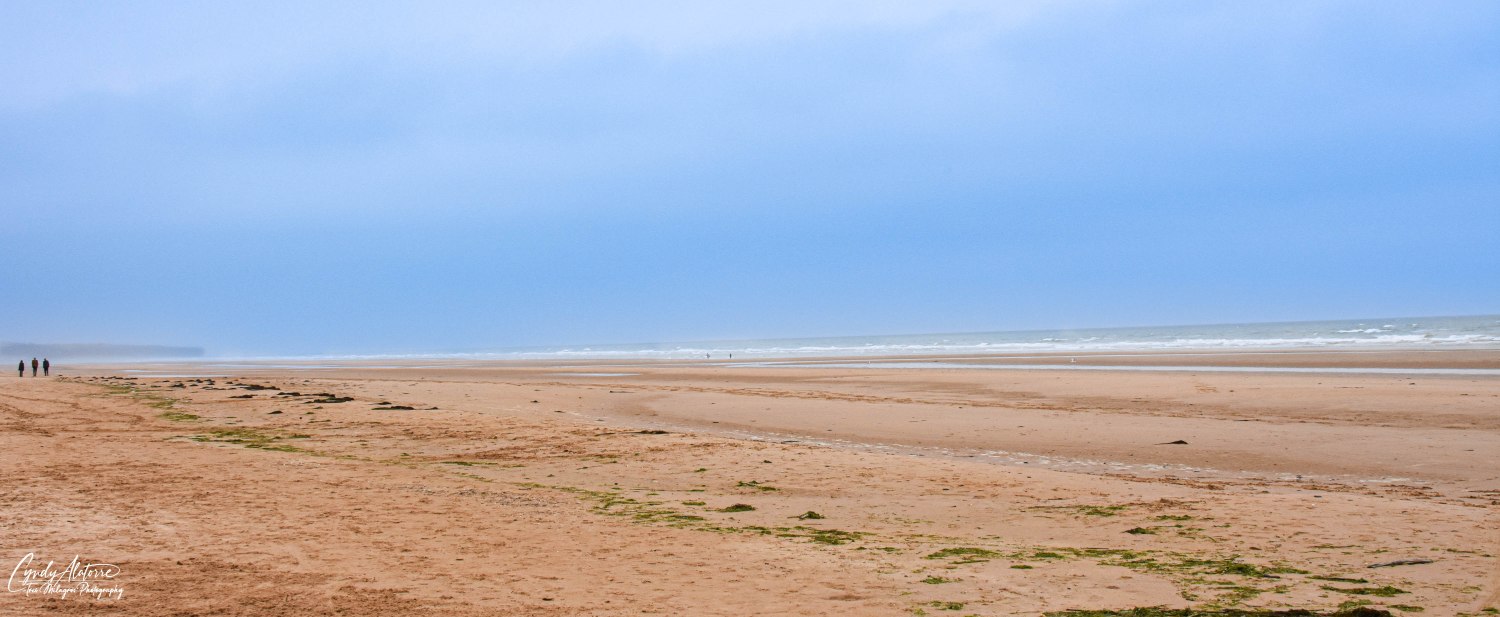
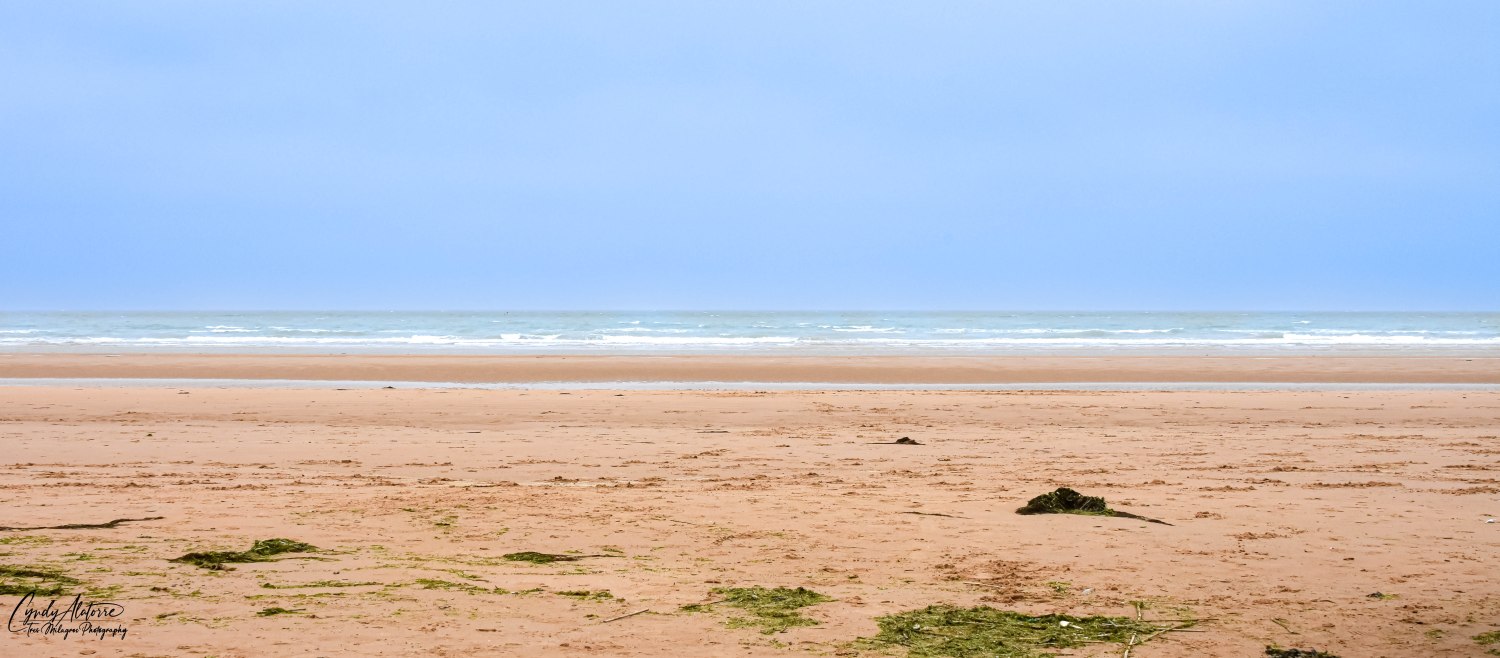



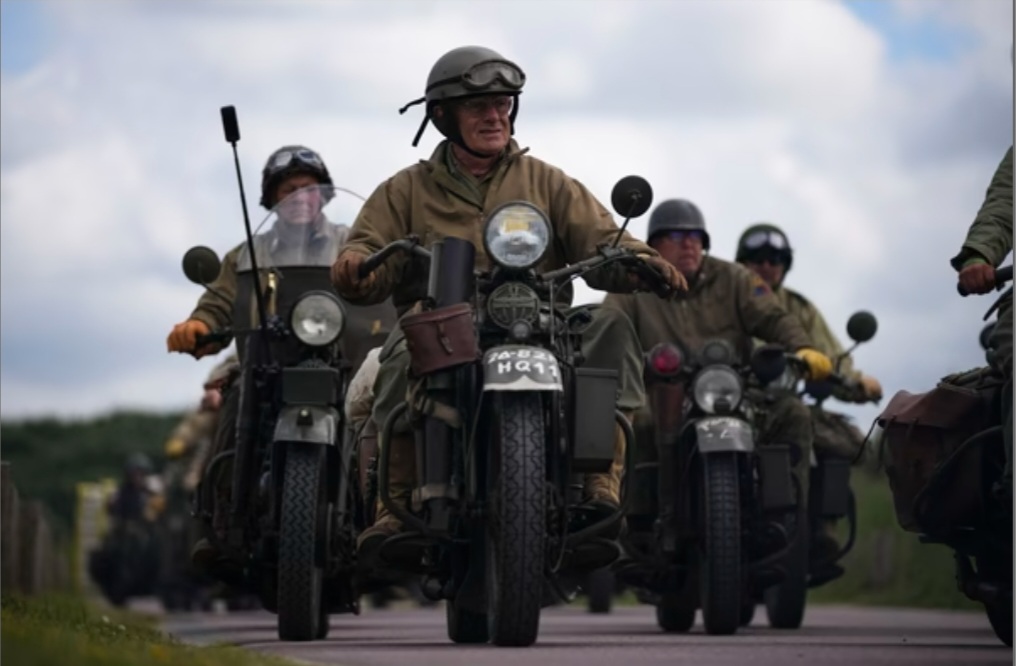
Discover more from "El Camino Thru My Lens"
Subscribe to get the latest posts sent to your email.

Amazing and Beautifully done Cyndy!!! You definitely captured with your beautiful photos, the essence of these great WW2 hero’s and the land they fought upon, it felt like I was there. I can feel how you put your heart into the stories. Thank for taking us all along on your adventure. ♥️
LikeLike